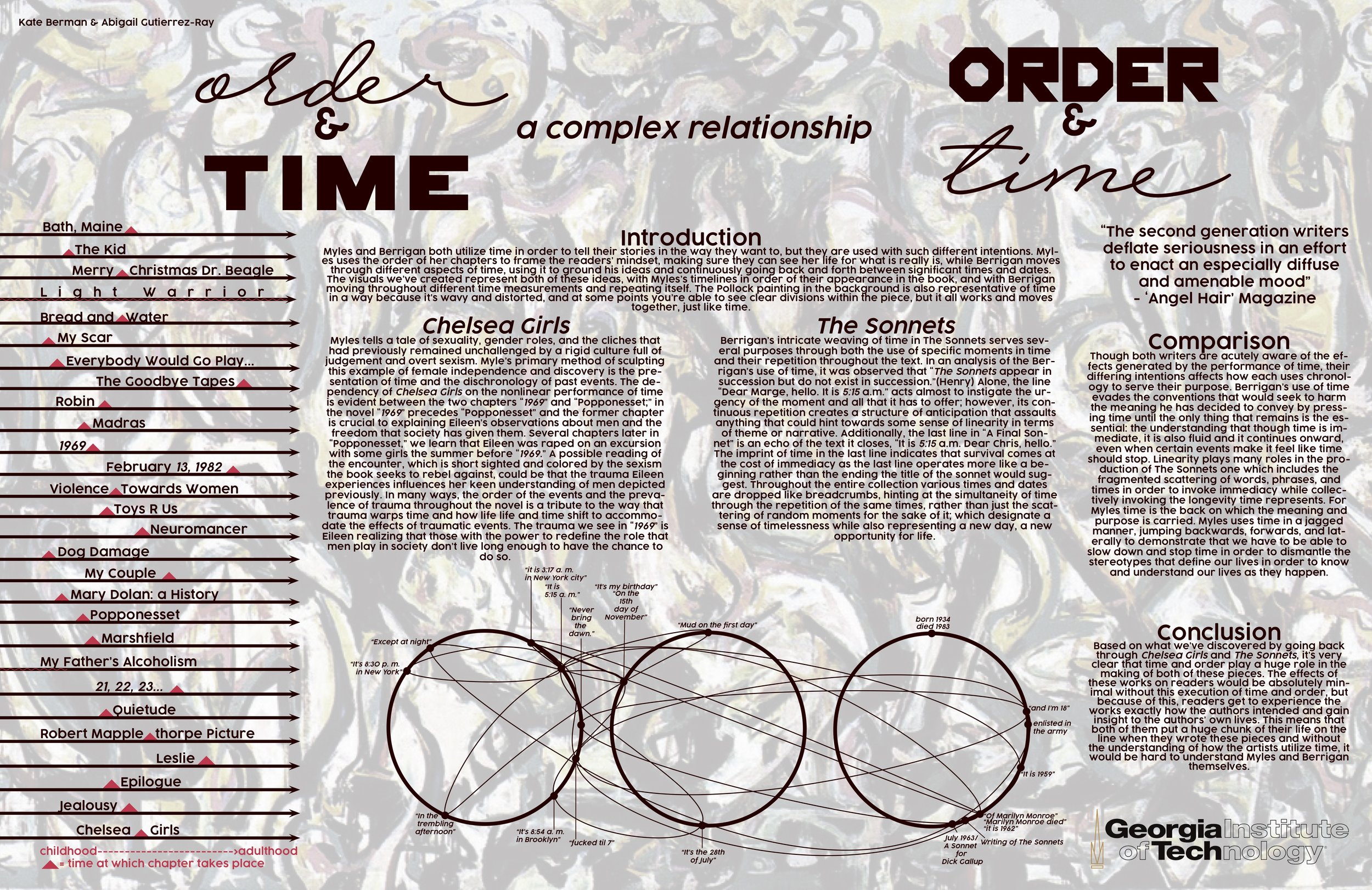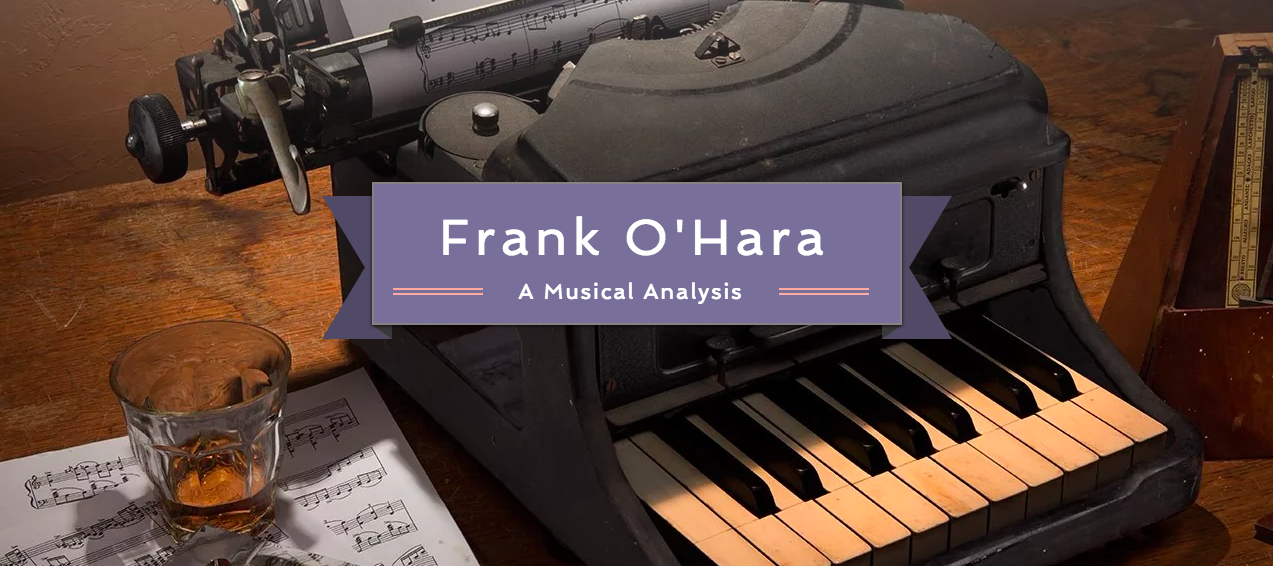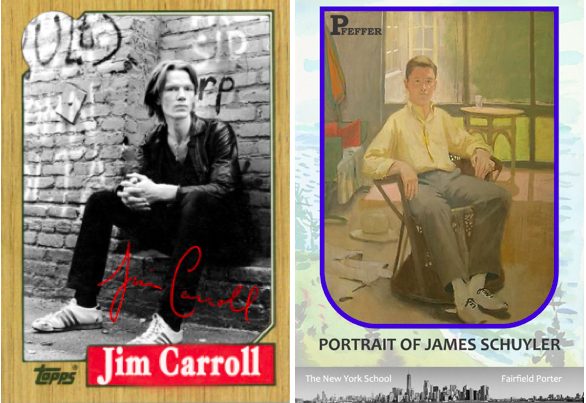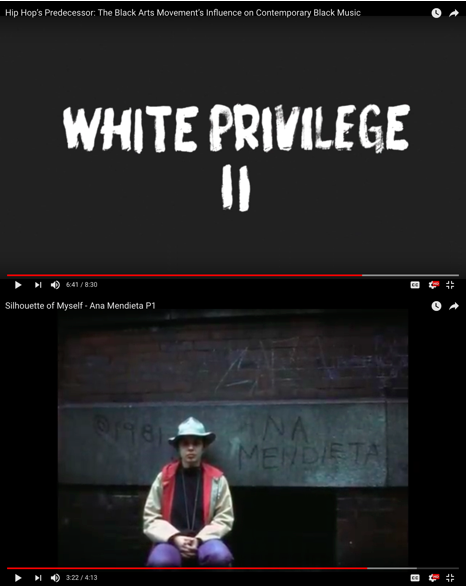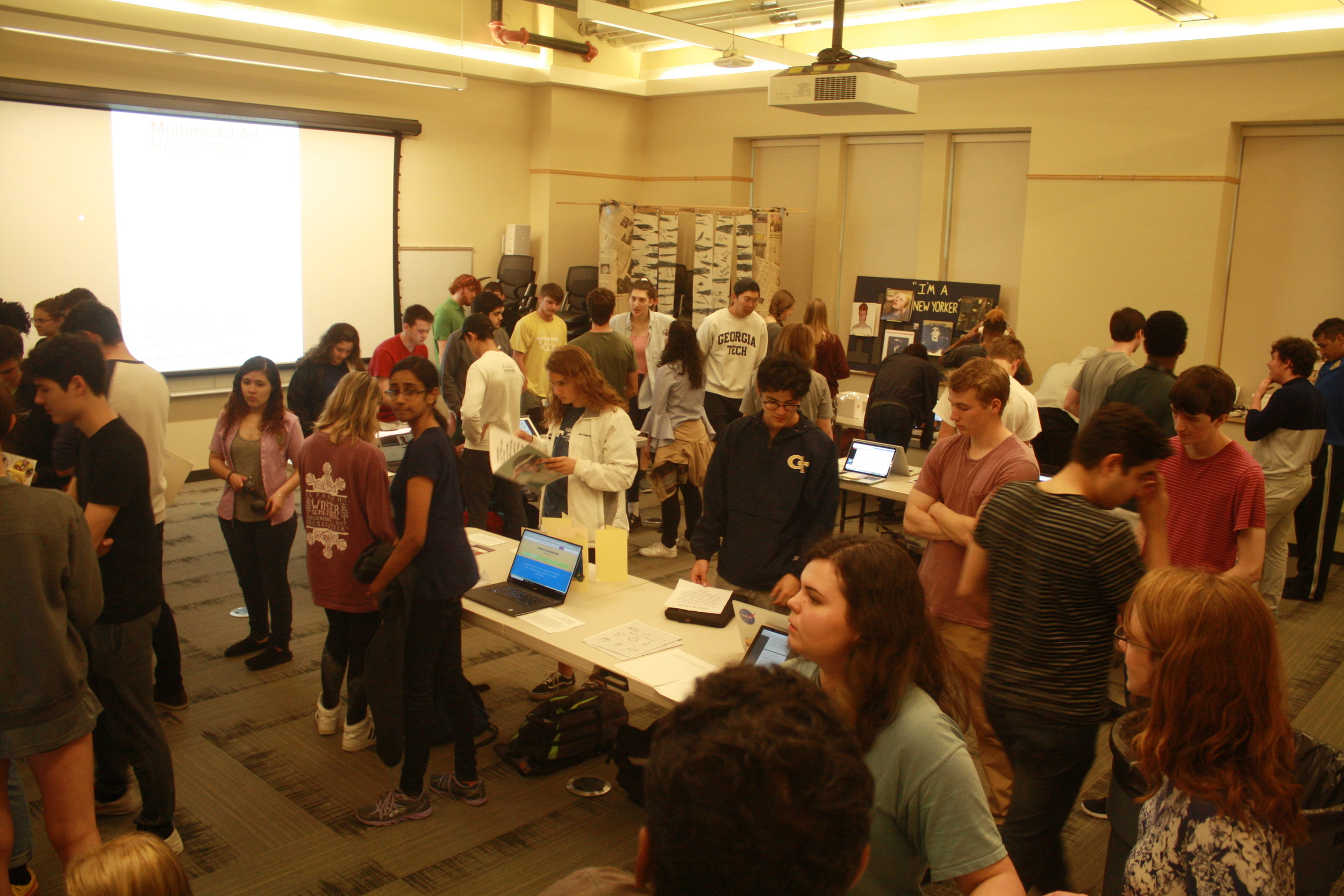Spring 2023
ENGL 4300: American Poetry Since 1945 and Archival Research
A capstone to every English major’s undergraduate study, the Senior Seminar provides opportunities for students to reflect on their studies; hone their skills in textual analysis, writing, and research; consider new critical approaches; pursue an original research project; and develop fluency in writing and speaking about literature in academic and professional contexts. This discussion-based seminar will focus on American poetry since 1945 with the goal of producing original scholarly projects through archival research. The course will function as an introduction to American poetry, poetics, and literary history post-1945 as well as an introduction to the process and intellectual stakes of doing primary source research in both material and digital archives.
Note: All student work used with permission. Authorship is noted when requested by the student.
***
Archival Research Project
Building on students’ work completing an annotated bibliography and short research paper, this archival research project is an opportunity to create a website-based multimodal project that showcases an introductory analysis of a poet’s work based on original archival research.
Janelle Branker on Audre Lorde
Tiffanie Goad on Anne Waldman
Jackson Rock on Ed Sanders
Helen Wells on Helen Adam
Maia Heath on Lucille Clifton
***
Student Reflections:
“This class has given me a relationship to archival work that I never expected to gain. I had been before and I always found the archives cool, but the opportunity to go to one myself, immerse myself, and connect with Spelman’s archivist really had me feeling like the scholars I reference in my essays. The work felt intriguing and special and that is the reason I wanted a career involved with Literature in the first place. I loved the spaces you brought me into as assignments, specifically For Keeps and Spelman really held a positive space for me and brought recognition to people in our city doing important work in the community.”
“Dr. Sturm uprooted who I thought I was as an English major and made me fall in love with 20th-century American poetry and archival research.”
“The archival research project was a blast; I was genuinely excited to go to the Rose Library. Holding a document signed by Ginsberg solidified the history I’d read about him - it made it real. Dr. Sturm’s open-minded, highly competent, and compassionate approach to teaching put me at ease. I always felt motivated to study the material, and looked forward to attending this class, every time. This class felt like one that I was always meant to take.”
“The most meaningful would have to be your passion Dr. Sturm. Watching you speak about archival work and bring primary sources to our lives was beautiful. To experience seeing your smile as you discovered certain elements of your studies and shared them with us was so nice to experience. I also really enjoyed how our class gelled together; by mid-semester we all really got comfortable with talking to you, and each other, it all just felt like a super interesting and fun conversation between all of us every class and it made me excited to attend and receive your and my peer’s feedback.”
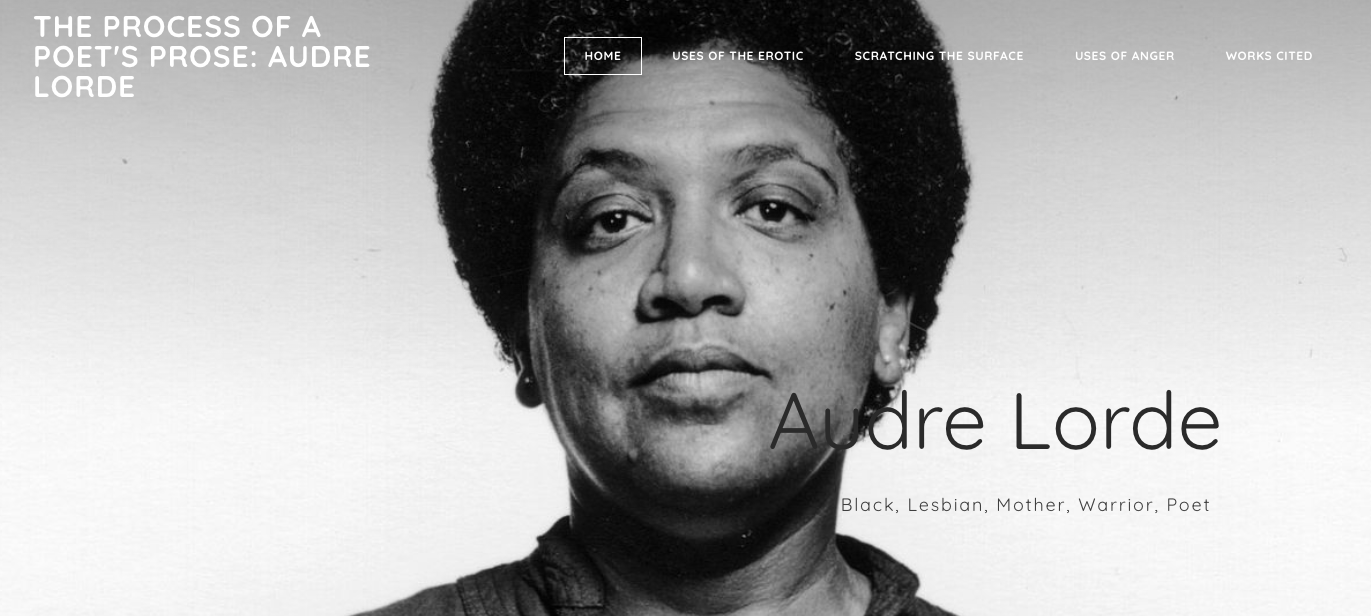
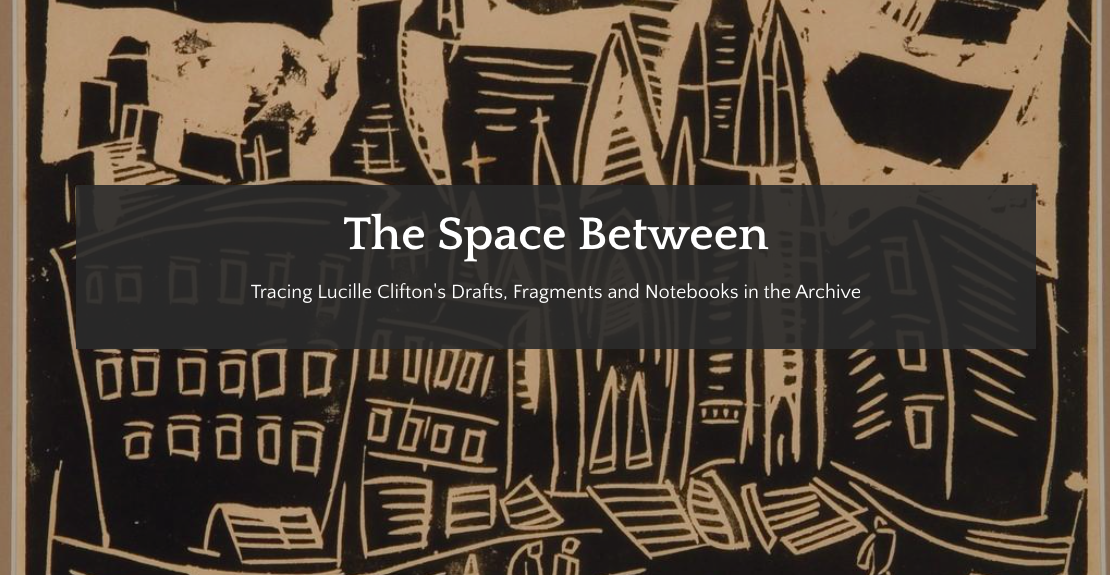
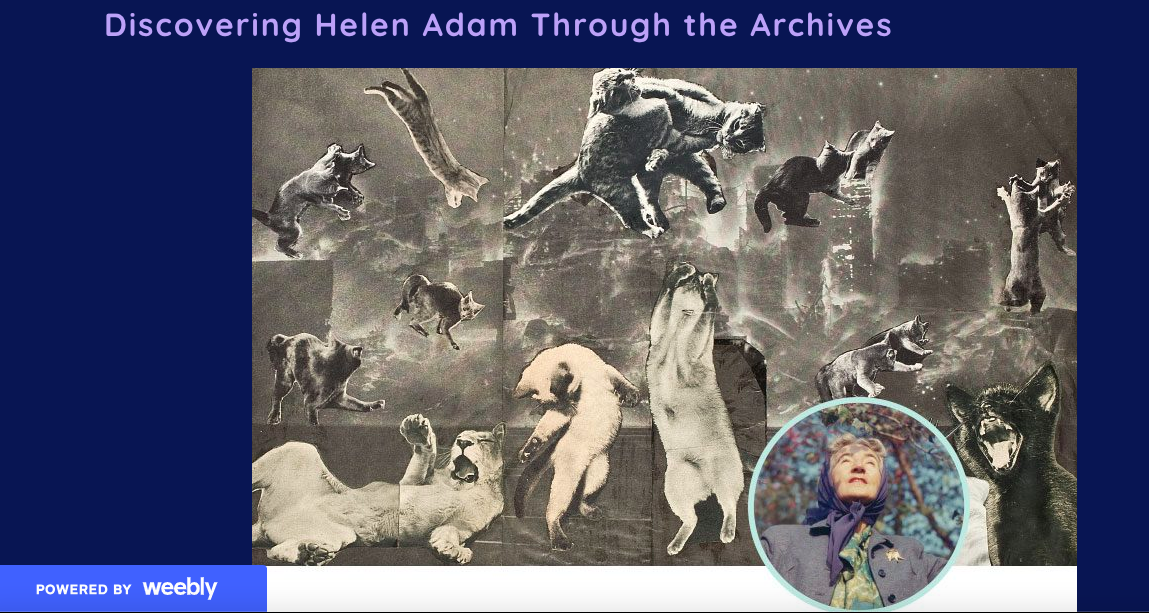
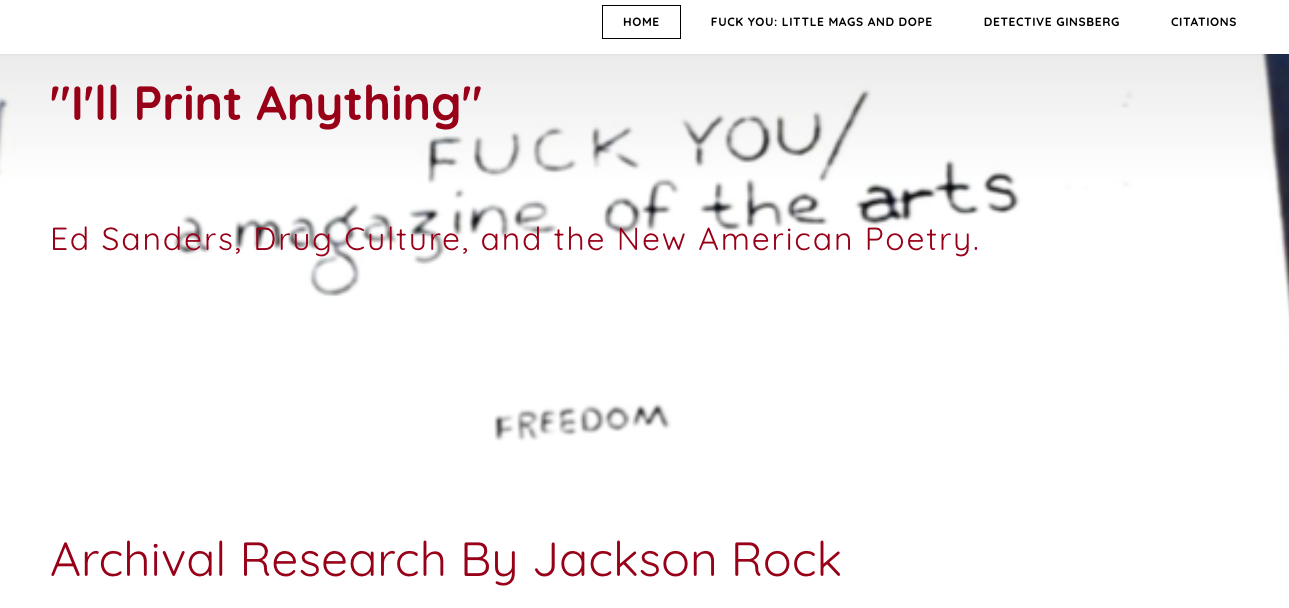
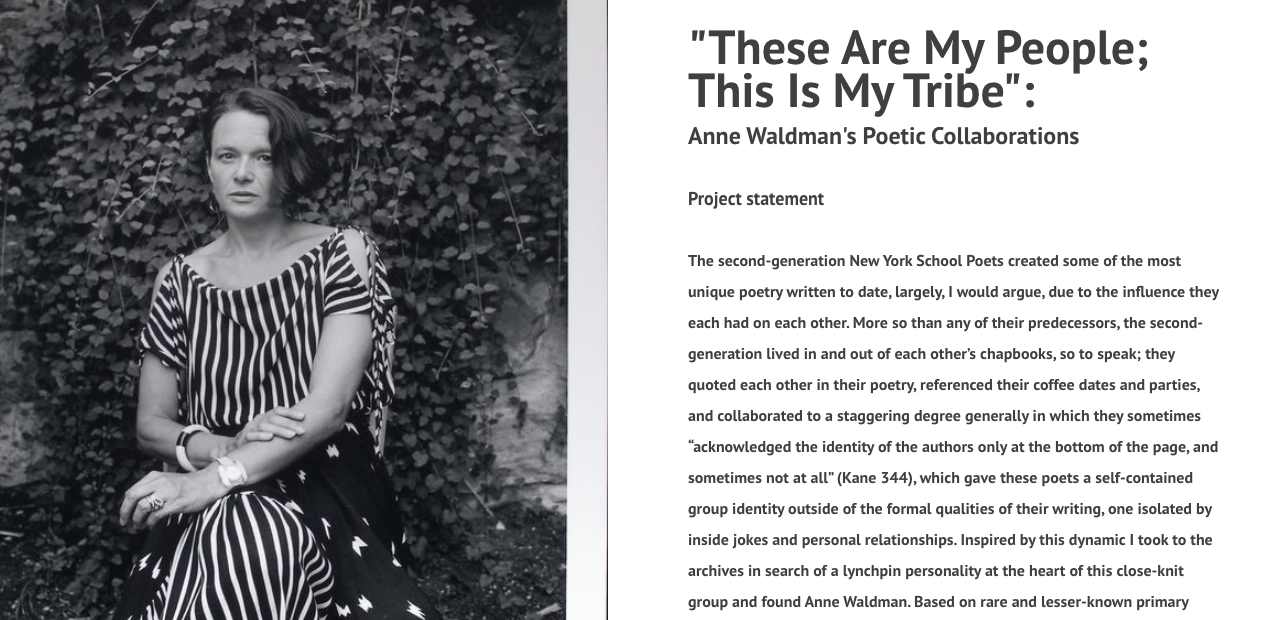
Fall 2022
ENGL 1102: Primary Source Literacy
This course will facilitate students’ development of primary source literacy by challenging them to explore, research, and analyze a range of primary sources in different genres and mediums, including visual art, newspapers, magazines, and other materials. The Society of American Archivists and Association of College and Research Libraries describe primary source literacy as “the combination of knowledge, skills, and abilities necessary to effectively find, interpret, evaluate, and ethically use primary sources within specific disciplinary contexts, in order to create new knowledge or to revise existing understandings.” In this class, we’ll specifically be exploring primary sources related to avant-garde art and the underground press from roughly 1950-1975, a historical period commonly associated with topics such as the Civil Rights Movement, youth counterculture, the Cold War, the Vietnam War, and other major political and cultural narratives.
Note: All student work used with permission. Authorship is noted when requested by the student.
***
Artifact #2: Describing Visual Art
Jack Vogt on Hopeless (1964) by Roy Lichtenstein
E.J. McLean on Ron Padgett (2015) by Trevor Winkfield
***
Artifact #3: Researching the Underground Press
Will Sales on Many Smokes
Devansh Mohan Sinha on Muhammad Speaks
***
Student Reflections:
“This English class made me challenge myself in so many ways I never thought I could. You always encouraged me that I could do it and help me in every way possible and I appreciate that so much. Out of all my years in school, you are a professor that cares about their students and wants them to learn.”
“I like that Dr. Sturm really taught us how to be more descriptive and intentional with our writings. He helped us whenever we needed and was eager to discuss readings with us. He encouraged us to find really cool things to write about, like with Artifact 2. His way of teaching was honestly unique and accommodated all ways of learning.”
***
ENGL 2130: Introduction to American Literature
This course traces the development of American literature from 1865 to the present by studying the works of both marginal and canonical writers with an emphasis on race, gender, sexuality, and aesthetic experimentation. By reading poetry, novels, nonfiction prose, and hybrid genres, we will investigate some of the primary issues in American literature and culture over the last roughly 150 years. Students will leave this class with a broad understanding of the aesthetic, historical, and critical themes of contemporary American literature.
***
Student reflections:
“Being in this class made me feel really appreciative of the materials I was taught, and even feel like my voice was heard. Feeling as though my struggles are being seen and addressed in the classroom really helped me as a person, not just a student.”
“I’ve never had such an active teacher. Not only are you a writer yourself, but I liked to see how into the texts you were, and you would get into our conversations during class and take our analyses of it to heart.“
“I found our class discussions about capitalism and exclusion to be enlightening. We talked about how nations are constructed through myths and narratives, which is something I had never considered before. I found the idea that nations were simply ‘imagined communities’ to be a bit confusing at first, but as our discussion progressed it was interesting to see how national identities are built through perceived differences.”
“The most memorable thing about this class will be our discussions about real-world issues. I admire your candor with these topics and in general. My teachers in the past tended to censor themselves, and although I do understand why, I felt like those class discussions would shy away from social issues such as sexism, racism, and classism. Our class discussions also gave me a plethora of perspectives on the topics we discussed, which I really enjoyed.”






Spring 2022
ENGL 1102: Primary Source Literacy
This course will facilitate students’ development of primary source literacy by challenging them to explore, research, and analyze a range of primary sources in different genres and mediums, including visual art, newspapers, magazines, and other materials. The Society of American Archivists and Association of College and Research Libraries describe primary source literacy as “the combination of knowledge, skills, and abilities necessary to effectively find, interpret, evaluate, and ethically use primary sources within specific disciplinary contexts, in order to create new knowledge or to revise existing understandings.” In this class, we’ll specifically be exploring primary sources related to avant-garde art and the underground press from roughly 1950-1975, a historical period commonly associated with topics such as the Civil Rights Movement, youth counterculture, the Cold War, the Vietnam War, and other major political and cultural narratives.
Note: All student work used with permission. Authorship is noted when requested by the student.
***
Artifact #1: Describing Visual Art
Individually, each student will create a well-designed, informative website that hosts a thorough description of a work of avant-garde visual art. The artifact will 1) by responding to the question “What do you see?”, offer a complete and in-depth description of a work of art that shows your ability to develop a complex piece of writing and, 2) create an informative and well-organized electronic environment that hosts your writing. The primary challenge of this artifact is the process of describing a work of visual art in a written medium. The final description will be at least 750 words. Instead of a traditional essay, your piece of writing is solely focused on persuasive, effective, and organized description. Consider “The Lonely Palette” podcast as an introduction to how to describe visual art in other modalities.
Dora Daniel on Helen Frankenthaler’s “Broome Street at Night” (1987)
Chris Thien on Lee Krasner’s “Gaea” (1966)
Ify Ojiaku on Lee Krasner’s “Summer Play” (1962)
William Harris on Fairfield Porter’s “Amherst Campus 1” (1969)
Keidy Rodriguez on Michael Goldberg’s “Zutto” (2000)
***
Artifact #2: Curating Atlanta’s Underground Press
Working in pairs, this research project will allow students to create a digital humanities project that investigates Atlanta’s alternative student newspaper from the 1960s, ‘70s, and ‘80s The Great Speckled Bird. The final deliverable for this project will be a student-made website that curates an individual issue of the newspaper. What does it mean to “curate” a primary source like a digitized issue of a newspaper? Think of a museum exhibit—text, titles, pull quotes, images, photographs, audio, and moving images are designed to tell a set of well-researched stories about an event, object, or history. In this case, you’ll curate a set of narratives about your issue of The Great Speckled Bird, which we can read as representative of a set of issues relevant to politically active college-age Atlantans in the late 1960s, including race, gender, sexuality, movements against the Vietnam War, and a range of other local and national issues. The issues of the The Great Speckled Bird that we’ll read will show us the cultural and political vision of the “New Left” youth movement in Atlanta. The project will begin with background readings on the alternative press movement and some history of The Great Speckled Bird.
Project by Kelly Jacinto Ozuna and Jany Nguyen
Project by Chris Thien and Brandon Bolivar
***
Artifact #3: Refining Primary Source Literacy
Students will compose a 3-page multimodal article introducing an issue of an alternative magazine or newspaper from the Independent Voices archive by investigating its central themes, arguments, and design features. Your group will select one of the thematic areas described the Independent Voices archive—Black American, Feminist, GI Press, LGBT, Latino, and Native American—from which you will choose a publication. Note that this project is described as an “article” and not as an “essay.” While essays are continuous texts that present an argument with supporting evidence and analysis, an article can be organized in sections, each of which present their own ideas that relate back to central questions or lines of inquiry. Like your Artifact #2 website, Artifact #3 will function as an introduction to your primary source rather than a complete interpretative analysis. Fully read the issue to accurately write about the publication’s central themes, arguments, and design features.
Alondra Carlos on the feminist newspaper Bread and Roses, winner of the Bert H. Flanders Freshman Essay Writing Award
***
Student reflections on these artifacts and the course:
“This course has shifted my writing process entirely, from note taking to drafting and incorporating quotes from sources.”
“This class has also shown me what it means to think more critically about political and social issues.”
“Being a woman and working on this artifact [about a feminist underground newspaper] made me more interested in learning about each feminist movement back then, so doing this project didn’t feel like a task or something that I just had to do. I was genuinely interested in learning about it as well as sharing my own thoughts and beliefs on these issues.”
“These projects allowed me to make creative and purposeful decisions about how to communicate to a particular audience by including different multimodal elements…. When I learned that we would not do essays in this class and that we would be doing [multimodal] projects, I was a little worried that I was not going to get the full academic learning experience. If anything, these projects challenged me more by requiring me to break out of that default approach.”
“The feeling of listening to Dr. Sturm saying something and thinking, ‘I have to remember this forever.’ It has been a while since I felt something like that. I felt stagnant in my thinking for the most part in many of my classes. I thought that I was just using the things I have already learned and just putting it to work which was true for the most part. In this course, I learned how to become a better writer and I realized my journey as a writer does not stop here. I have so much to improve and work on, but I think it is powerful just knowing that fact alone.”
***
ENGL 1103: Researching the New York School
This Honors Program course will utilize poetry, painting, and film from a constellation of artists and writers associated with what’s known as the New York School to explore the multimodal languages of American art practices. By activating the etymological root between the words experiment and experience —“experiri,” meaning “to try or to test”—this course will try and test various creative and critical approaches to the arts to gain an experiential, historical, and rhetorical understanding of aesthetic innovation in the global cultural center of New York. Utilizing our multimodal curriculum, students will engage with visual and nonverbal communication through the visual rhetorical analysis, create research projects utilizing archival material, and experiment with data visualization techniques and analysis. This course will approach these artists and the questions their work provokes in contemporary American culture as it relates to gender, race, sexuality, representation, and politics as well as other themes and concepts. We will actively participate in and contribute to this aesthetic and scholarly discourse in an effort to develop effective strategies of multimodal communication.
***
Artifact #3: Little Magazine, Big Data
For this artifact students will work in groups of four to research an avant-garde little magazine. Groups will create an informative website that curates information about that magazine’s history, aesthetics, contributors, and how it speaks to or creates a community of artists. Each group will create multiple data visualizations to represent the information contained in these little magazines (0-9, Big Sky, Mother, Soup, C Comics). What does it mean to “curate” a primary source like a digitized run of a little magazine? Think of a museum exhibit—text, titles, pull quotes, images, photographs, audio, and moving images are organized to tell a set of well-researched stories about an event, object, or historical period. In this case, you’ll curate a set of narratives about your little magazine and the community it communicates.
Collaborative project on Mother (1964-1967)
Collaborative project on Soup (1980-1983)
Collaborative project on 0-9 (1967-1969)
***
Student reflections on these artifacts and the course:
“It was super cool to get to focus on a specific era and group of artists. I feel like I got to become a mini-expert on the topic which I did not expect to get to do. I really liked the New York School so much because it felt so niche, but also representative of a revolutionary time period.”
“From the first introduction of the project, I thought the concept of these little magazines was extremely compelling and I found myself wanting to read them all. The little magazines and the topics they covered piqued my interest quickly and I was intrigued by how ambiguous they were, and why I had never read one before, and it made me want to learn more outside of class.”
“I have personally never felt more challenged working directly with primary sources, but I also found it to be a lot more fun and exciting to be the first to provide certain analyses, such as our project for Soup, while collaborating with my teammates to create the only multimodal project that exists on that little magazine. I think that sounds pretty fucking cool honestly.”
“I actually realized that I like poetry and art because, as I was taking this class, they took me away from the technicality of life that science has always influenced me. Through the New York School’s visual art and poetry, I had the opportunity to make sense of my life in a way that I hadn’t before.”







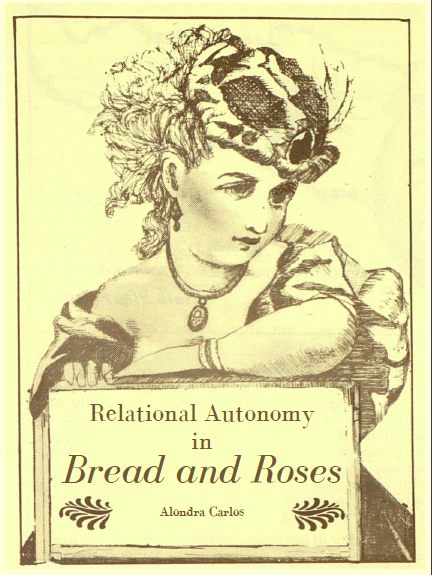




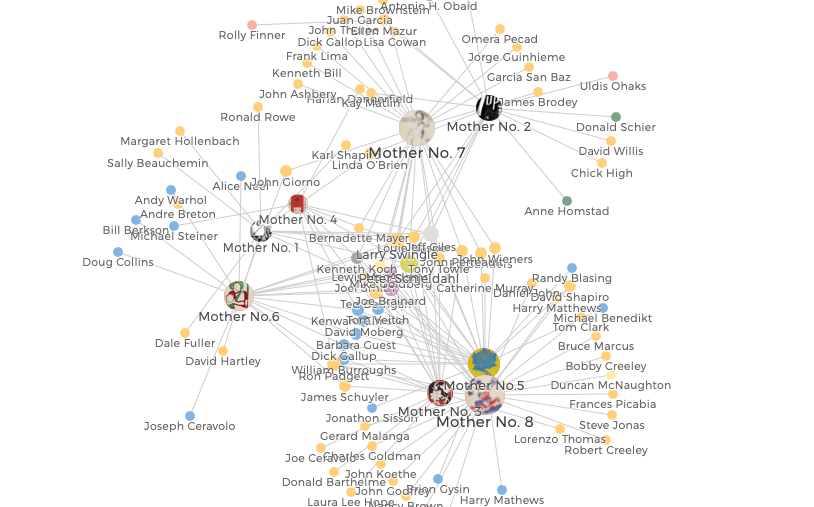
Fall 2021
ENGL 1102: Avant-Garde Poetry and Painting
This course will utilize poetry and painting from a range of avant-garde writers and artists to explore the multimodal languages of American art practices. By activating the etymological root between the words experiment and experience—“experiri,” meaning “to try or to test”—this course will try and test various creative and critical approaches to the arts to gain an experiential, historical, and rhetorical understanding of aesthetic innovation as a means of improving our own skills as writers. In other words, we’ll be studying art and art practices not to become artists or literary scholars, but to find new ways to imagine and improve our capabilities as writers, communicators, and researchers.
This writing course writing will approach these artists and the questions their work provokes in contemporary American culture as it relates to gender, race, sexuality, representation, politics, and other themes and concepts. We will actively participate in and contribute to this aesthetic discourse in an effort to develop effective strategies of multimodal (written, oral, visual, electronic, and nonverbal) communication. By the end of the semester, our course goal is to become familiar with and critically appreciate avant-garde poetry and painting as a means of becoming more adept and confident communicators.
Note: All student work used with permission. Authorship is noted when requested by the student.
***
Artifact #1: Experimental Index
Students will work in groups to create experimental indexes for Joe Brainard’s I Remember that track the book’s references to sex and sexuality, coming of age, metaphysics, art and labor, and family and friendship. While an index in a book is traditionally an alphabetized list of topics and words that appear in a printed book that provides a page number where each item can be found, these experimental indexes will record the ephemeral, overlapping, and not-so-obvious topics that serve as the thematic and critical background for Brainard's book. As you reread and skim the memoir with your attention trained to inventory specific themes and concepts, the process of reading will subtly transform, and you will reflect on these changes in the introduction that will accompany the finished index. These indexes will be presented as thoughtfully designed multimodal documents that include: 1) an introduction that describes the process of compiling your index and makes an argument about how your index allows us to analyze this theme in Brainard’s book; 2) a quantitative-based chart or graph; and 3) the complete index.
“Art and Labor” Index by Jerome Vincent, Christian Andrews, Destiny Walker, Pablo Salaices, and Tanjanique Williams
“Coming of Age” Index by Anaya Martin, Arshi Ali, Shane Donnally, and collaborator
“People” Index by Dararsa Abdullahi, Eladio Juarez, Sophie Prentice, and collaborators
***
Artifact #2: Voicing Visual Art
Individually, each student will create a well-designed, informative website that hosts a podcast-like audio segment describing a work of avant-garde visual art. This podcast will investigate the aesthetic, cultural, political, and/or historical importance of the piece of visual art. The artifact will 1) offer a persuasive and indepth multimodal view into the piece of art that shows your ability to develop and implement an aesthetic vocabulary and, 2) create an informative and creative electronic environment that hosts your recording. The primary challenge of this artifact is the process of describing a work of visual art in an oral medium. The final podcast will be at least 5 minutes long but no longer than 7 minutes. Consider “The Lonely Palette” podcast as a guiding example of how to approach planning the recording and structuring your script.
Lee Krasner’s “Milkweed” (1955) by Toni Toyobo
Jean-Michel Basquiat’s “Tuxedo” (1982) by Christian Andrews
Benny Andrews’s “Portrait of Oppression” (1985) by Alecia Ferguson
David Hammons’s “Untitled (Basketball Drawing)” (2002) by Anaya Martin
Elaine de Kooning’s “Farol” (1958) by Ashby Boland
***
Student reflections on these artifacts and the course:
“Avant-garde.” Before this semester, I thought this was just some fancy word posh people used to describe high class art pieces at an art gallery while they sip their tea and nibble on their muffin. However, from our class discussions this semester, I can now tell you that avant-garde encapsulates a deeper meaning. It means to be unfamiliar, out of the norm, different. At the beginning of the semester, we analyzed avant-garde paintings from artists such as Jane Freilicher and Alex Katz, works of art that helped me see new abstract discoveries that before this class, I would have looked at one-dimensionally, not recognizing the patterns or finding the words to describe what I was seeing. I’ve not only understood the meaning of this beautiful-to-say word, but I’ve also learned my strengths and weaknesses as a multimodal communicator through the projects I’ve completed about avant-garde art.
Overall, my communication skills have exponentially changed over the course of this class. I learned how to layer audio, ease sound in, equalize volume, make an image more transparent, pick appropriate fonts, reinforce information with images, and how to use a website to present evidence that is more accessible. Not only have I done these things, some of which sounded silly six months ago, I have also learned why learning these are important. It is easy to get stuck in the world of what you have been taught: essays, books, and more essays. There can be more meaningful, powerful, and efficient ways to communicate, especially when combined together. Using multimodal documents to curate information for an audience without writing an essay has been genuinely eye-opening.
After taking this course I learned that no matter how confident I feel about my work, there is always room to improve and that goes for any individual in any profession. I love English, and grasping the fact that the subject requires multimodal forms of communication helped me get a broader understanding of English for the future.
English 1102 with Dr. Sturm changed the narrative of what English should be.
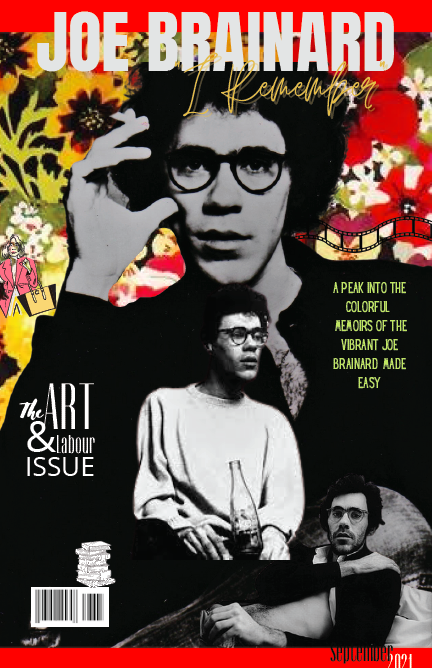
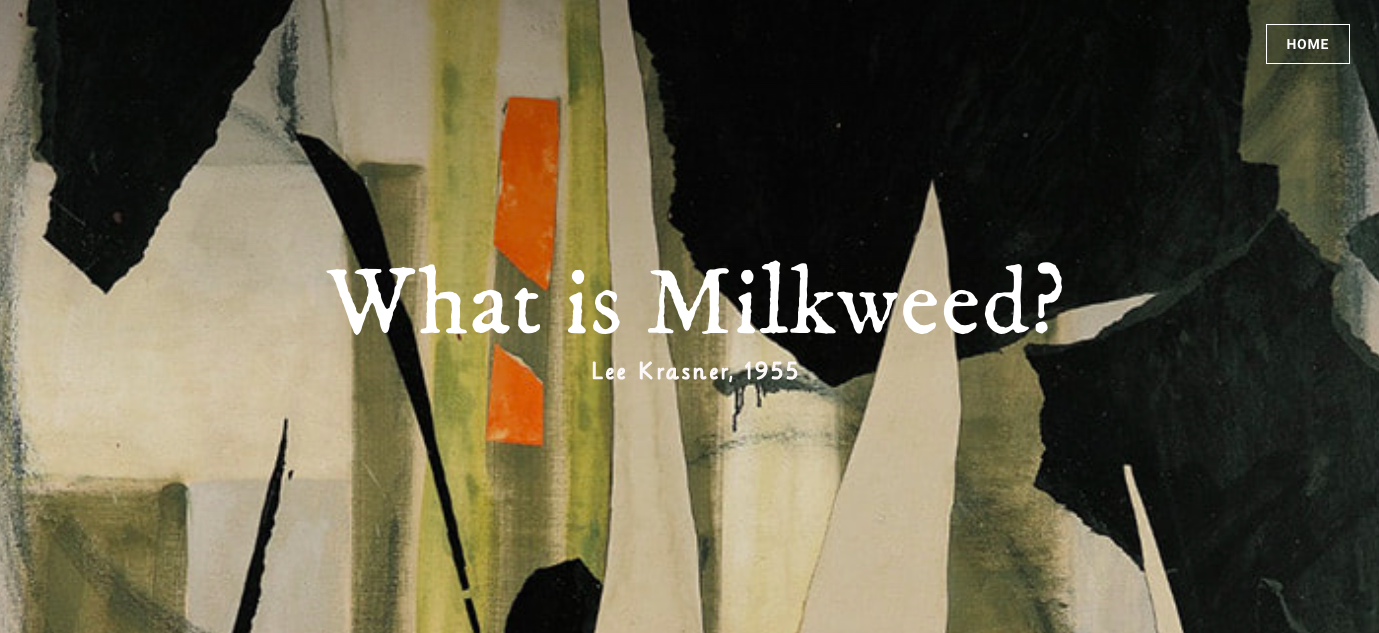
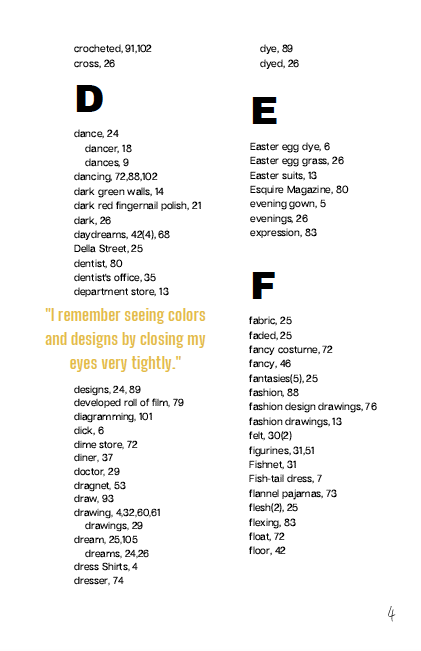


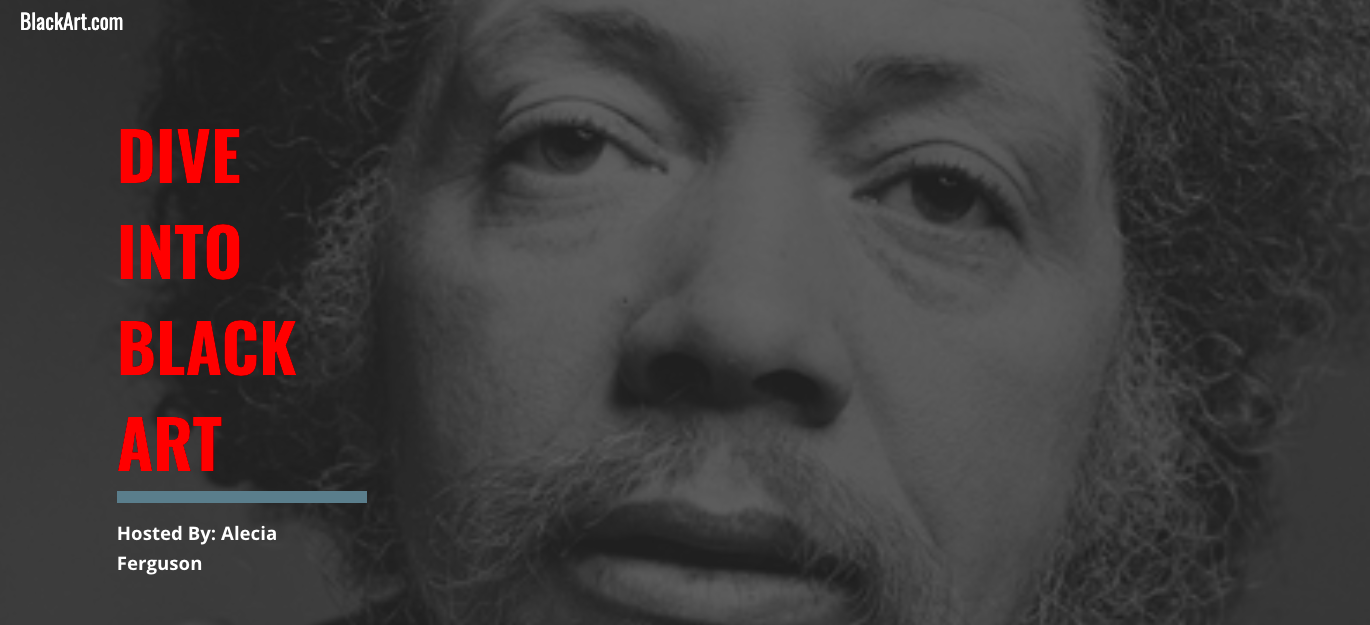
Summer 2020
ENGL 1102: The Poetics of Sustainability: Race, Immigration, and the Environment
Utilizing our WOVEN curriculum, this fully online distance learning Serve-Learn-Sustain course will explore the intersections of race, immigration, and the environment as urgent social, political, and ecological issues through the lens of poetry. By reading across a global lineage of poets, students will learn about the historical and contemporary intersections of race, immigration, and environmental issues in order to create multimodal artifacts that engage with what we will refer to as a “poetics of sustainability.” The course’s primary questions will be: How does poetry as a genre allow us to confront these complex issues? How do these writers and artists allow us to articulate a more equitable future for communities facing challenges related to racial injustice, inequity, environmental crises, and environmental racism? What do these issues, especially related to immigration, look like here in Atlanta? Where and how do issues of race and the environment overlap as we consider rhetorical strategies for articulating our questions, ideas, and solutions related to identity, nationality, history, nature, and culture?
Note: All student work used with permission. Authorship is noted when permitted by student.
***
Artifact #1: Experimental Index
Students worked in groups of five to create experimental indexes for Inger Christensen’s alphabet that track the sequence’s references to science, metaphysics, time, the human, and the nonhuman. While an index in a book is traditionally a list of items, such as topics or names, treated in a printed work that gives for each item the page number where it may be found, these experimental indexes record the ephemeral, overlapping, and not-so-obvious topics that serve as the thematic and critical background for Christensen’s poetic sequence. As students read and re-read the poem with their attention trained to inventory specific themes and concepts, the process of reading subtly shifted and transformed, and students reflected these changes in the reading process in a collaborative note accompanying their finished indexes.
Nonhuman Index by Group 5
Science Index by Group 1
***
Artifact #2: Documentary Reading: A Scattering
Students will work individually to create a photo-textual documentary—essentially a series of blog posts—that traces the act of reading and thinking through Bhanu Kapil’s Schizophrene. As we discussed in our group meetings, Schizophrene is a kind of record of an impossible book, another book that could not or would not exist. In this sense, Schizophrene is a trace, a ghost. Facing the diasporic conditions generated by the 1947 Partition, the book confronts how postcolonialism, sexual violence, mental health, economics, spirituality, family, war, nationality, and gender are intertwined on both individual and cultural levels. These are some of the most challenging conditions of human life and help us to understand the gaps and fragments in Schizophrene. It’s as if the book is appearing through a gauze. Formally, it reflects the tensions of communication in the aftermath of trauma— particular images linger and resurface, omissions and gaps emerge in narratives, there are simultaneous excesses and erasures. Nothing about the book is easy, which is why we’ll linger in it this week in Artifact #2. “Documentary Reading: A Scattering” asks you to respond to five prompts with five accompanying photographs—one per day from June 30 to July 4.
Due to the personal nature of this artifact, I’ve refrained from including examples of the final deliverable in this portfolio. Two of my student’s photographs from a section of the assignment, which show them retrieving their letters after the “Letting Go” exercise are shown on the left.
***
Artifact #3: The Poetics of (Un)Sustainability
Borders, Citizenship, Diaspora, and Memory: In groups, students will produce multimodal websites that investigate and analyze the writing of Bhanu Kapil and Brandon Shimoda. What are the key questions posed by the historical and contemporary political and cultural relationships constructed in their books? Students will develop a specific set of arguments about how these poems address issues of what we’ll call a poetics of (un)sustainability. In other words, groups will construct arguments about how these books address BORDERS, CITIZENSHIP, DIASPORA, and MEMORY. Of course, these four ideas overlap in myriad ways; it’s not as if your final website will be divided into these four sections. Our goal is to use these concepts as a foundation for thinking about the books’ various entanglements—family, nationality, war, technology, infrastructure, racism, language, gender, writing, health, citizenship, and other ideas that you see operating in the books. Rather than separating these ideas out from each, one of the goals of this project is to bring these ideas to the surface and show how they’re entangled across both books.
This project will also incorporate information provided by the Innovation Law Lab, a nonprofit organization that advocates for immigrant and refugee justice, about how the current crisis is affecting immigrant communities and asylum seekers in the U.S. Again, this artifact gives students an opportunity to present a set of questions about how these books speak to issues of civil and human rights. In some ways it is similar to a traditional research paper; in other ways, it is completely different. Creating a website, consider how to formulate your group’s writing and analysis to the modular form of a website so that you’re capitalizing on the affordances of this electronic medium. It might be helpful, as in the example student websites listed below, to think of the website as a set of digital museum-like exhibits. We’ll discuss how to think about the affordances and organization of the website as the project develops.
Final Artifact by Group 6
Final Artifact by Group 1

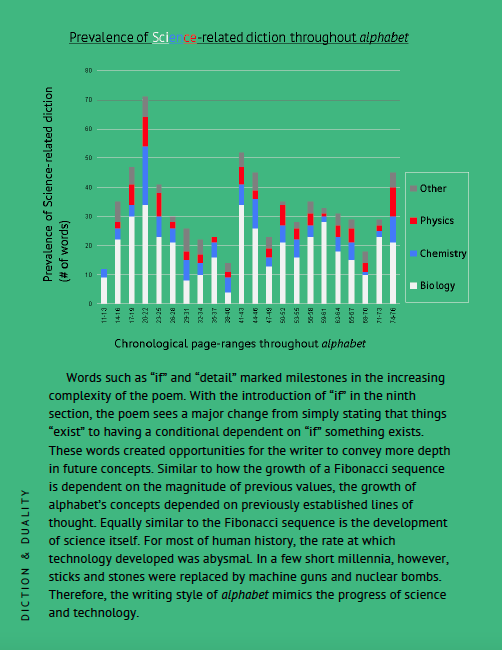

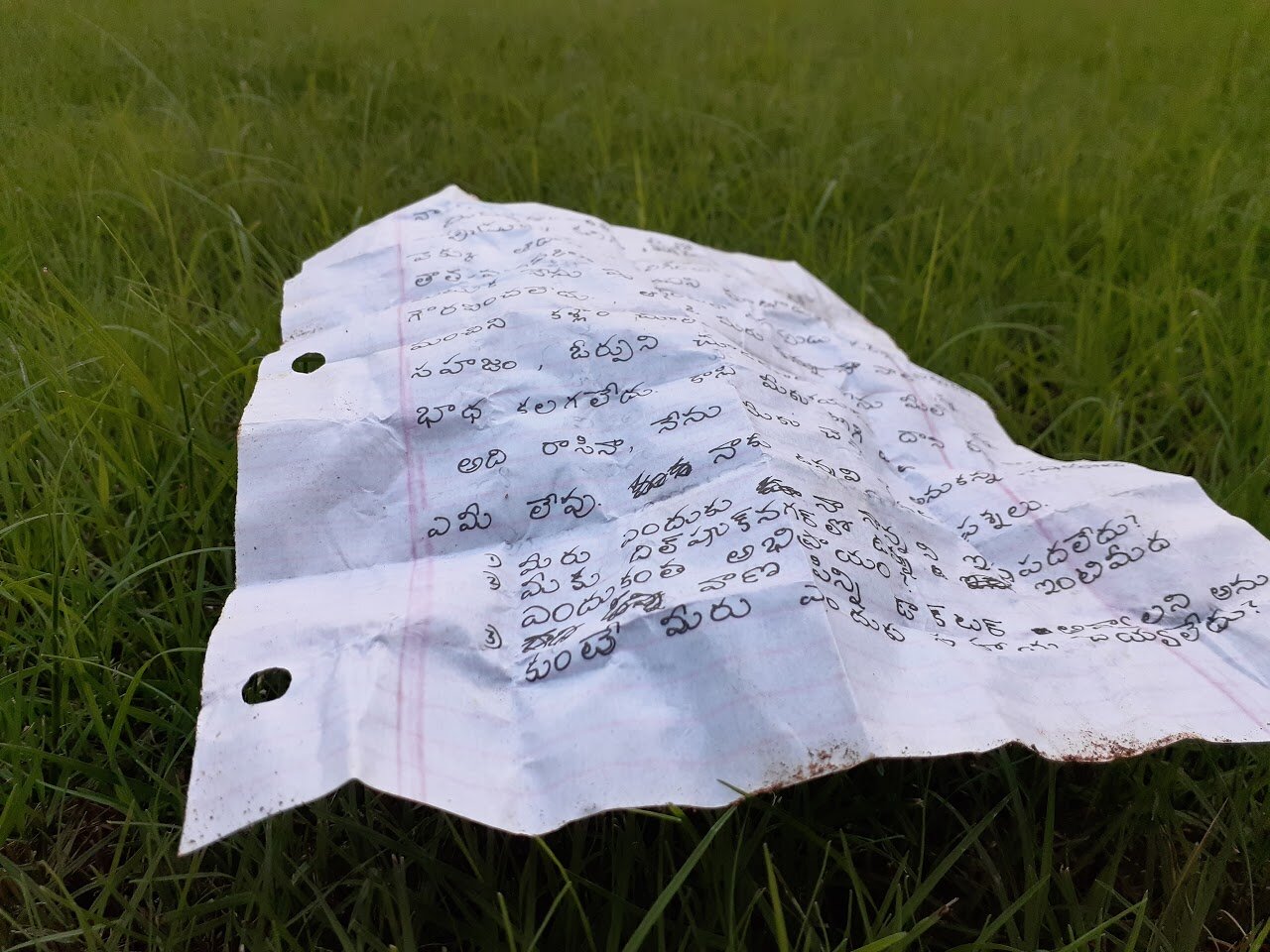
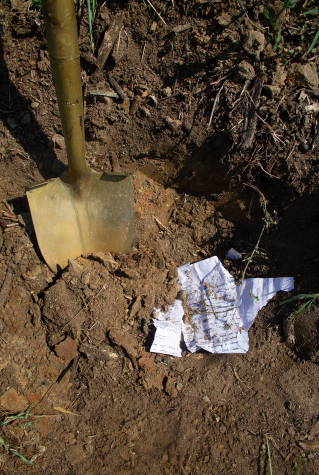

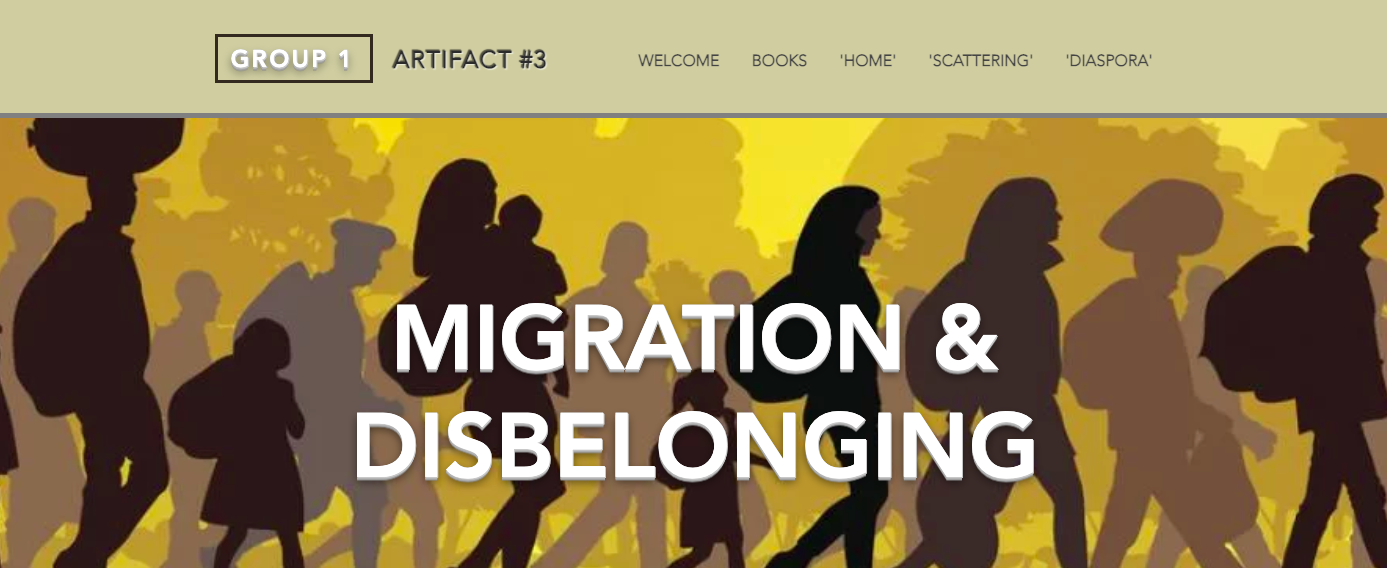
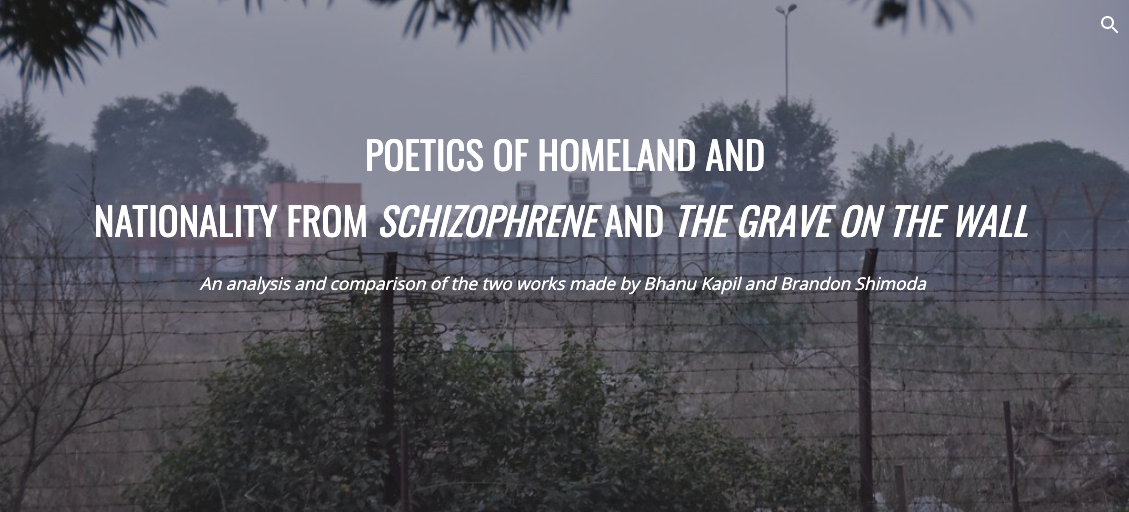
Spring 2020
ENGL 1102: Atlanta in the 1960s
This SLS-affiliated course utilized a series of digital archives to explore the history of Atlanta in the 1960s through a range of primary source documents. These digitized primary sources gave students the opportunity to study some of the most significant events in Atlanta’s history, including civil rights, systemic racism and discrimination, Black Power, housing policy, mass transit, the construction of Atlanta-Fulton County Stadium, the beginning of Atlanta’s professional sports teams, responses to the Vietnam War, and the student movement in Atlanta. This course helped students to develop primary source literacy by introducing them to how to use digital archives, recognize and analyze a range of primary sources, and utilize these resources to produce research-based multimodal artifacts in a range of mediums.
This writing and communication course approached these topics and the questions they provoke by linking these issues to contemporary American culture and unique service-learning opportunities. Students actively participated in and contributed to historical, political, and scholarly discourses in the effort of developing effective strategies of WOVEN (written, oral, visual, electronic, and nonverbal) communication, interrogating the history of Atlanta in the 1960s via these archives and other sources to understand and critically appreciate the production of knowledge through primary sources.
Note: All student work used with permission with authorship noted when requested by student.
Course syllabus
***
In pairs, students will create a multimodal essay that introduces a section of the Ivan Allen Digital Archive and explores how Allen’s own narratives in his memoir Mayor: Notes on the Sixties are complicated by the primary sources in the archive. Featuring multimodal elements and organized using basic graphic design processes, this 8-10 page research essay (including text, images, audio/visual, and hyperlinks) will act as a critical investigation of how the material from Allen’s mayoral records allows us to deconstruct and analyze the stories of Mayor. Like any research essay, this artifact will articulate a specific thesis that will be supported by evidence in the form of primary sources from the archive as well as selections from Mayor. However, because this artifact includes archival research, the thesis of each project will develop and shift through the process of engaging with primary sources in the archive. In other words, while groups will have a sense of the direction of their argument based on the readings from Mayor, the substance and purpose of that argument will be determined by what groups encounter in the archival material. Students will present their essays during an in-class conference-style presentation.
“Atlanta Stadium: A Symbol of Hope to Some, Despair to Others” by Imiri David and Baylor Reini
“Civil Rights in the 1960s: How Black Became the New Red” by Yash Talwar and Mallory Monaghan
“Summerhill: Riot or Rebellion?” by Haley Russell and Antonia Nunley
***
Artifact #2: Atlanta Mini-Documentary
As a group, students will create a mini-documentary that investigates and animates a narrative within the Ivan Allen Digital Archive. The documentary will 1) tell a story about an event or issue related to the history of Atlanta during Ivan Allen, Jr.’s administration; 2) describe the historical and cultural context of the event or issue; and 3) be based on use of material from the Ivan Allen Digital Archive. This documentary will be an educational documentary snapshot of a particular story within the history of Atlanta. The primary goal of this artifact is to develop a competent, functional, and well-edited visual-oral-textual narrative that accurately exposes your audience to your topic. The primary challenge is how to animate your topic in a primarily visual medium. Considering that we’re working on this artifact for only 3 weeks, the final documentary will be about 3-4 minutes long. Consider any contemporary documentary as a guiding example of how to approach your planning and design.
“SNCC: The Untold Story” by Antonia Nunley, Sonali Master, Bethany McMorris, and Haley Russell
“Pickrick: A Martyr Paved Over” by Imiri David, Lisa Higgins, Kiandra Peart, and Stefan Quaadgras
“Environmental Racism at Proctor Creek” by Mallory Monaghan, Noah Weinstein, Yash Talwar, and Baylor Reini
***
Artifact #3: Curating Atlanta’s Alternative Press
This research project will allow students to create a digital humanities project that investigates Atlanta’s alternative student newspaper from the 1960s and ‘70s, The Great Speckled Bird. The final deliverable for this project will be a student-made website that curates an individual issue of the newspaper. What does it mean to “curate” a primary source like a digitized issue of a newspaper? Think of a museum exhibit—text, titles, pull quotes, images, photographs, audio, and moving images are designed to tell a set of well-researched stories about an event or history. In this case, you’ll curate a set of narratives about your assigned issue of The Great Speckled Bird, which we can read as representative of a set of issues relevant to politically active college-age Atlantans in the late 1960s, including race, gender, sexuality, movements against the Vietnam War, and a range of other local and national issues. Just as the Ivan Allen Digital Archive allowed us to discover the marginalized narratives left out of Allen’s Mayor, the issues of the The Great Speckled Bird that we’ll read—all from the paper’s first year in 1968—will show us the cultural and political vision of the “New Left” youth movement in Atlanta in the final years of Allen’s administration. There will likely be an entire new set of issues that dominate the pages of The Great Speckled Bird that aren’t represented in Mayor or the Ivan Allen Digital Archive, especially related to the Vietnam War. The project will begin with background readings on the alternative press movement nationally and some history of The Great Speckled Bird. As a class, we will read Volume 1 Issue 1 of the newspaper together and use the Canvas “Discussion” feature to generate a shared conversation about the newspaper and the kinds of questions we can ask to help us in our project. Each student will be assigned a single issue of The Great Speckled Bird to read, research, and analyze. Following the discussion board, students will be spend the week of April 6-10 reading and analyzing their assigned issue of the paper. The week of April 13-17 will be spent designing and finalizing the site, which will be created using either Wix, Weebly, or Google Sites.
“Volume 1 Issue 2, April 1968” by Ken Ackers
“Volume 1 Issue 3, April 1968” by Imiri David
“Volume 1 Issue 16, September 1968” by Haley Russell
***

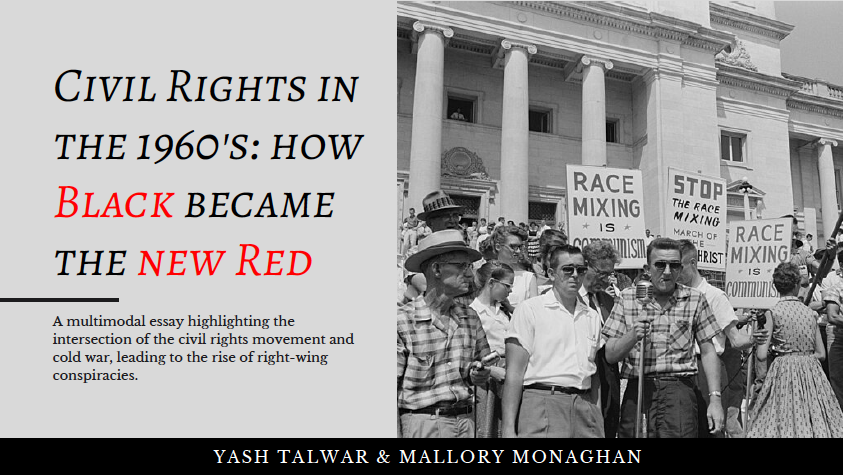
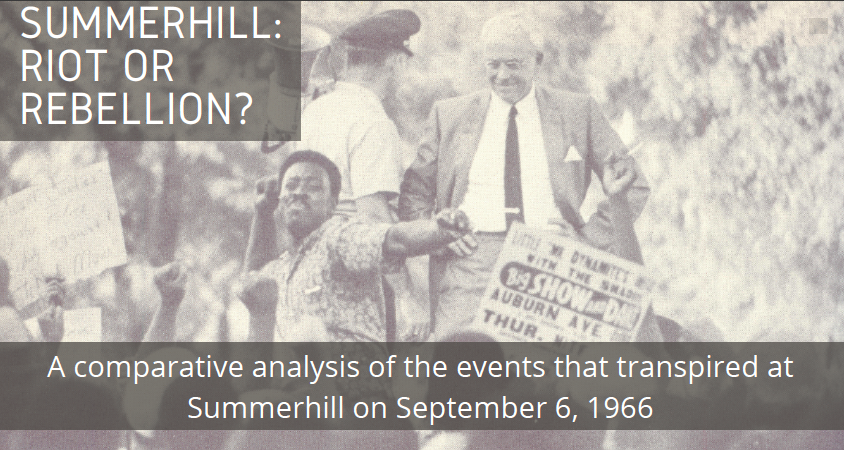
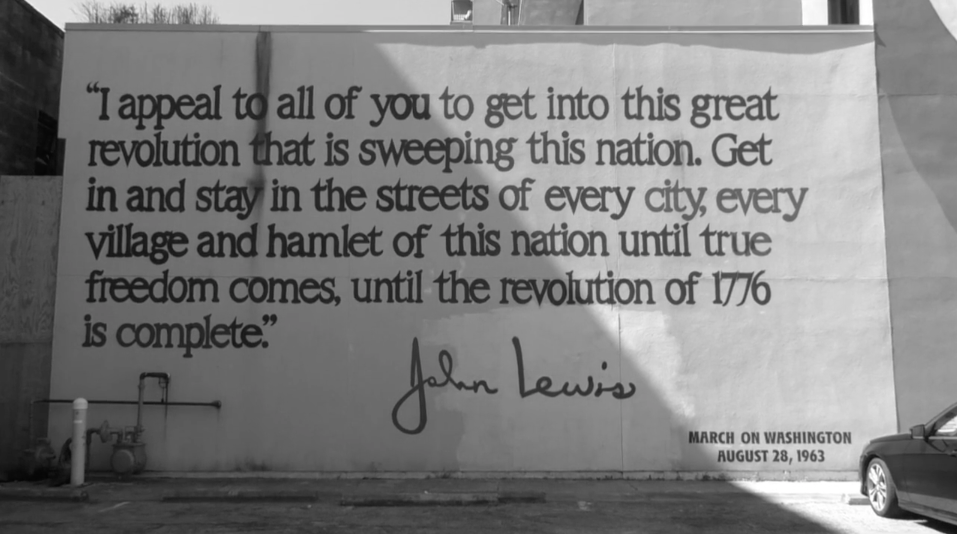

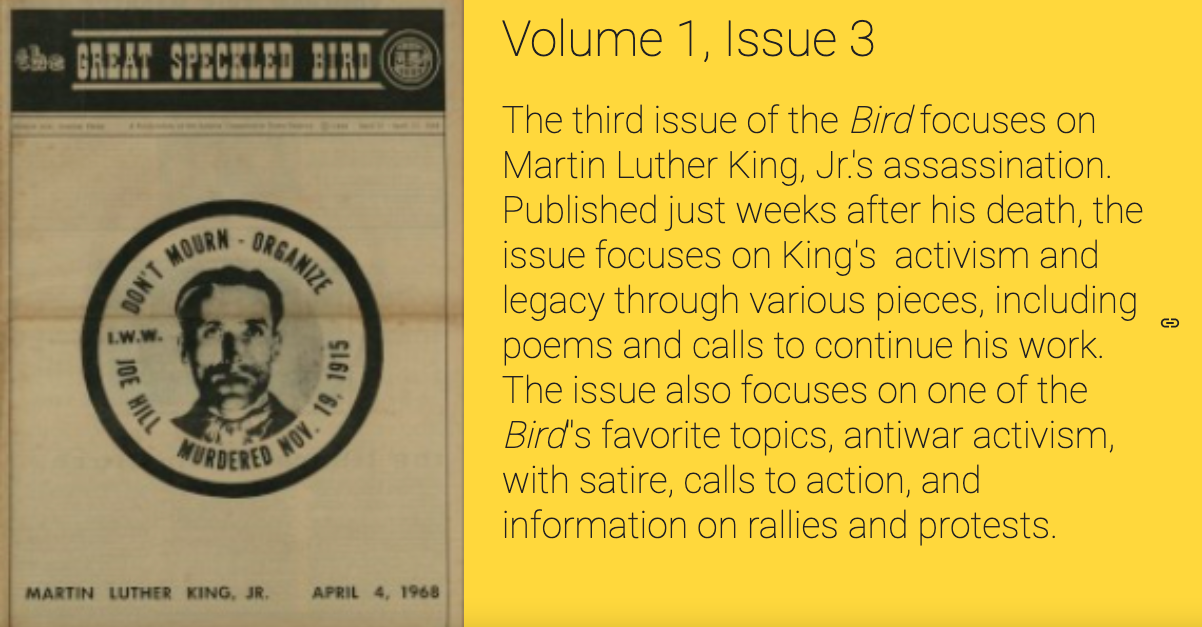
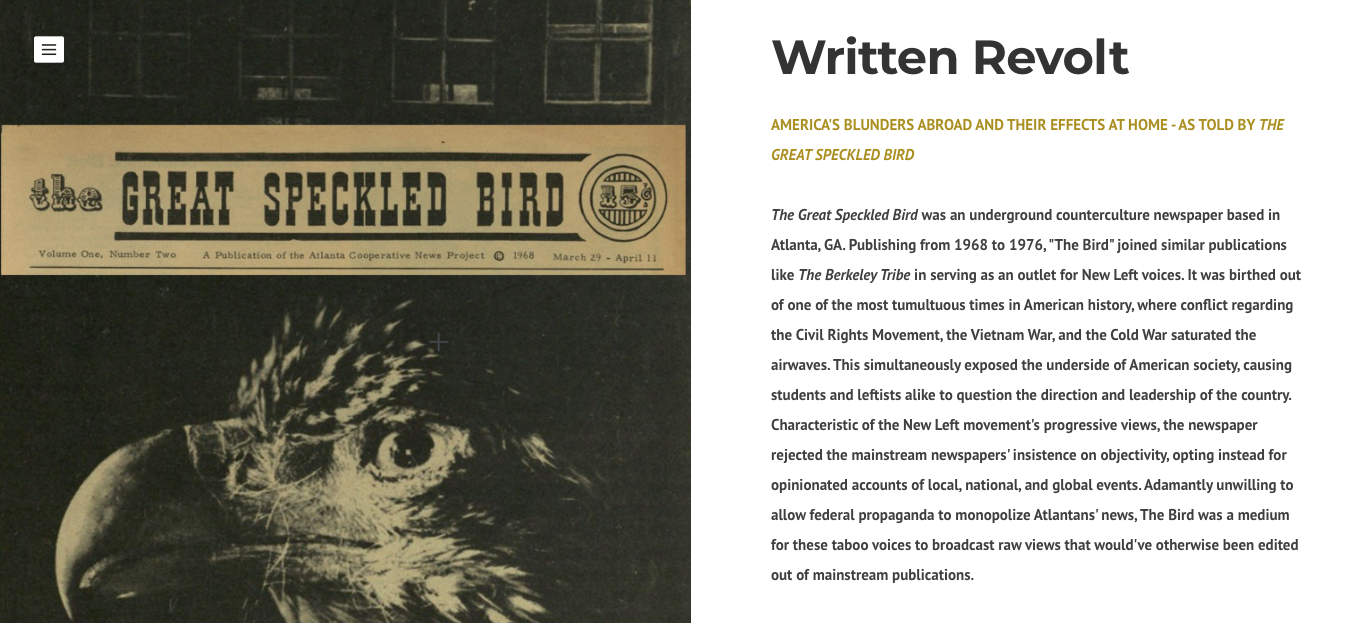
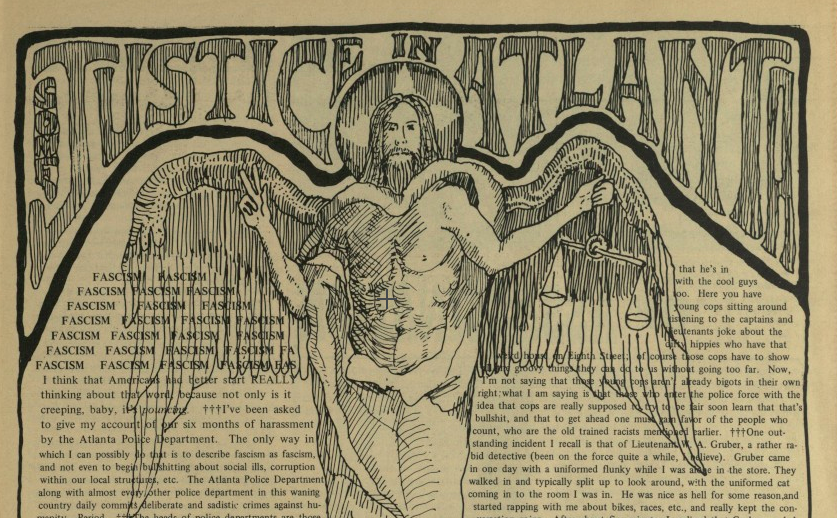
Fall 2019
ENGL 1102: Poetry, Painting, Film, and Music in the New York School
This course will utilize poetry, painting, and film from New York School writers and artists to explore the multimodal languages of American art practices. By activating the etymological root between the words experiment and experience—“experiri,” meaning “to try or to test”—this course will try and test various creative and critical approaches to the arts to gain an experiential, historical, and rhetorical understanding of aesthetic innovation in the global cultural center of New York over the last half century. Utilizing our WOVEN curriculum, students will engage with visual and nonverbal design through trips to Atlanta's High Museum of Art and Arts@Tech events, create original research projects, and experiment in hands-on creative and critical practices.
This writing and communication course will approach these artists and the questions their work provokes in contemporary American culture. We will actively participate in and contribute to this aesthetic discourse in the effort of developing effective strategies of WOVEN (written, oral, visual, electronic, and nonverbal) communication, interrogating New York-based art and artists to understand and critically appreciate the intersections of art, culture, history, place, and technology.
Note: All student work used with permission with authorship noted when
***
While looking through the work below, listen to this 5-minute recording of student reflections recorded during our end-of-semester New York School Research Showcase.
Artifact #1: Literary Research Poster
In groups, students produced visual posters that highlight original and unique correspondences between Joe Brainard’s I Remember and Ted Berrigan’s The Sonnets. Rather than a traditional book review or essay translated into a poster presentation, this visual artifact investigates these related yet divergent texts through a specific thesis, utilizing textual evidence, secondary critical sources, and your accumulated knowledge of the New York School of Poets aesthetic. Students showed their posters during an informal full class presentation day.
“Community Through Collage in The Sonnets and I Remember” by Hannah Jane Baumann, Toonie Goyal, Ishan Padmani
“‘Why Are My Hands Shaking?’: An Analysis of the Usage of Sensory Details in New York School Texts” by Jonathan Wu, Sneh Shah, Priya Verma, Qi Jiang
“‘About All Those Radio Waves’: The Relationship Between Technology and Collage in The Sonnets and I Remember” by Michael Kim, Lily Turner, and collaborator
“‘And Go to the Movies’: Pop Culture References in I Remember and The Sonnets” by Madeline Berns, David Clark, Skyler Edwards
“‘Each Tree Stands Alone in Stillness’: Nature and Landscape in The Sonnets and I Remember” by Grace Saad, Matthew Warrington, Jason Gao
“Chronological Dissonance in the New York School: Nonlinear Development in I Remember and The Sonnets” by Micah Abramson, Philip Boblasky, Andy Huynh
***
Honors Artifact #1: Berrigan and Brainard’s New York School
In pairs, students created websites that investigate I Remember by Joe Brainard and The Sonnets by Ted Berrigan, along with archival material from Emory’s Rose Library, to introduce the New York School through these artists’ work. The purpose of the artifact is to develop an effective, specific aesthetic vocabulary that critically describes the “second generation” New York School as embodied in Brainard and Berrigan’s work while identifying and uncovering unique correspondences across these books in connection with archival primary sources. Students considered how to incorporate data visualization or other multimodal analytical techniques into their project.
“Collage in the New York School” by two students
“The Unconscious: Brainard and Berrigan” by Bobby Bloomquist and collaborator
“Complete Dissonance: Investigating the Literary Collages of Joe Brainard and Ted Berrigan” by Vivek Subramaniam and Rajit Khanna
***
Artifact #2: Podcast on Visual Art
As a group, students created a podcast episode that investigates and describes a single piece of visual art created by a New York School visual artist. The podcast 1) addresses the aesthetic, historical, and cultural context of the piece, and 2) also considers the political and biographical narratives accessible via the work. The primary goal of this artifact is to develop a competent, functional aesthetic vocabulary in order to describe visual art in an oral medium.
Robert Rauschenberg's "Yellow Body" (1968) by Rajit Khanna, Stefanny Arcos, and collaborator
Louise Nevelson's "Sky Cathedral" (1958) by Barrett Carney, Sai Varanasi, Asier Ruiz, and Bobby Bloomquist
May Ray’s “La Fortune” (1938) by Toonie Goyal, Micah Abramson, and collaborator
Red Groom’s “Dali Salad II” (1980) by Alana Simpson and two collaborators
Adolph Gottlieb's "Duet" (1962) by Marcos Guerrero-Gomez, Jason Gao, and collaborator
Robert Rauschenberg's "Overcast III" (1963) by Matthew Warrington, Hannah Jane Baumann, and two collaborators
Jack Whitten’s “9-11-01” (2006) by Madeline Berns, Mihir Nagaraj, and Gehna Chaubal
Lee Krasner’s “Future Indicative” (1977) by Lily Turner, Sylesh Suresh, Jonathan Wu, and collaborator
Emma Amos' "Tightrope" (1994) by Colin Cassell, Mikayla Williams, and collaborator
Helen Frankenthaler’s “Weeping Crabapple” (2009) by Skyler Edwards, Alvin Bao, and collaborator
Grace Hartigan’s “Summer to Fall” (1971-1972) by Clay McKnight, Michael Lee, and collaborator
***
Artifact #3: New York School Research Project
This artifact builds on the processes of Artifacts 1 and 2 by allowing students to pick a New York School poets, artist, or magazine and create an original research project investigating that artist’s work. A series of research support documents, including a research proposal, outline, and progress report, aided in the artifact’s completion. In addition to the research within each project, every student also composed a 1000-word Research Statement. This mini-essay articulates the artifact’s purpose, research findings and analysis, and describe the artifact’s contribution to the field of study.
“Life, Pain, and Devotion: The History of Alice Notley's Feminist Storytelling Poetics” by Hannah Jane Baumann
“Love, Alice: The Selected Interviews of Alice Notley” by Madeline Berns
“Close to me & Closer... (The Language of Heaven) and Désamère: Poetry and Environmentalism” by Skyler Edwards
“Endless Memory: A Data Visualization of Trends in Joe Brainard’s I Remember” by Marcos Guerrero-Gomez
“The Sound of Giorno” by Kevin Quayle
“Dissecting Amiri Baraka's Involvement with Jihad Productions and the Congress of African People” by Sneh Shah
“All Umbra: Black Poets, Photographers & Artists On The Lower East Side” by Alana Simpson
“The New York School and Strange Faeces” by Sylesh Suresh
“Patti Smith: Punk Poet Laureate” by Gehna Chaubal
“What is Telephone?” by Andy Huynh
***
Honors Artifact #3: Curating the New York School
This research project allowed the entire class to collaborate on a digital humanities project that investigates the New York School through race, gender and sexuality, and technology utilizing material from Emory’s Rose Library. The artifact resulted in a single collaborative website for the entire class. A series of research support documents, including a research proposal and progress report, aided in the artifact’s completion. Each group produced a 1000-word Research Statement, a mini-essay that articulates the group’s research purpose, findings and analysis, and describe the work’s contribution to the field of study. One member of each group also acted as a graphic design liaison, resulting in a group of four students who served as the final design managers for the collaborative website. All students participated in research, composition, editing, and design in multiple ways throughout the process.
“Curating the New York School”
Collaborative note on project: “This full-class collaborative project curates a set of digital exhibits that present the New York School of poets through the lenses of gender and sexuality, race, and technology. Sixteen students developed "Curating the New York School" over the course of four weeks during the Fall 2019 semester at Georgia Tech, including original archival research conducted at Emory University's Stuart A. Rose Manuscript, Archives, and Rare Book Library. Students worked in three teams to research, develop, edit, and present this project, including one team that worked as the inaugural set of students in the Mimeo Lab, a student-led project about the intersections of literature and technology that includes the restoration and use of a set of mimeograph printing machines, the same technology used by many of the New York School poets we studied.”
***
Student reflections on these artifacts and the course:
“As I read more Baraka, I came to realize that my internal feelings did not arise due to my own opinions, but rather because Baraka intended his readers to feel anger at the injustice described by his poetry. Rather than feeling disgusted at having to read Baraka’s works, I became much more interested in his poetry. I even visited Emory’s Rose Library to get a better understanding of Baraka’s political philosophy and how it may have influenced his writing style. The process I went through to thoroughly grasp Amiri Baraka’s poetry made me realize how important it was to understand all facets of a subject matter in order to effectively communicate an idea about it.”
“For the first time in an English class, I felt like I was allowed to not really know the answer to these questions nor accept a singular explanation. I had walked into Emory’s archive with intentions of finding definitive support to my hypothesis of Brainard’s timidity and Berrigan’s prejudicial self-assurance, but quickly had to accept that there was more to these artists. I let the documents guide me. Truthfully, I hadn’t even considered that research even needed to be done in this field, but suddenly, I was the one doing that work.”
“Studying the New York School changed the way I look at art. In previous English classes, artists leave clues -- veiled gestures, hidden symbols, and cryptic metaphors -- that the reader ultimately deciphers to reach our prize: meaning. Identifying this meaning involves being well-versed in literature, artistic devices, and common themes. Is that synecdoche or metonymy? What does the color green represent here? However, when considering New York School works, art rarely allows us to decipher its argument. Instead, it invites us to acknowledge its strangeness. This change demystified the process of consuming art; our job as readers was no longer to follow an author’s argument but to observe. Engaging in this observation rendered art an open dialogue between the artist and the viewer.”
“Developing a refined aesthetic vocabulary will allow me to describe with a greater level of precision, an essential communication skill that will be used no matter the career I pursue.”
“I recognized that art isn’t about high-minded rhetoric or high-brow ideas but the expression of the powerful human characteristic: collaboration with the medium and the materials.”
***
ENGL 1102: Atlanta in the 1960s
This course will utilize the materials collected in the Ivan Allen Digital Archive to explore the history of Atlanta in the 1960s through the lens of Mayor Ivan Allen, Jr.’s administration (1962-70). The Ivan Allen Digital Archive is a digital archive hosted by Georgia Tech since 2016. It contains over 10,000 documents amounting to over 20,000 pages related to Allen’s mayoral tenure including a range of important material related to civil rights, systemic racism and discrimination, housing policy, mass transit, the construction of Atlanta-Fulton County Stadium, and the beginning of Atlanta’s professional sports teams. Students will read Allen’s memoir Mayor: Notes on the Sixties and engage with other digital archives to create artifacts that support and promote the use of the Ivan Allen Digital Archive.
This writing and communication course will approach these topics and the questions they provoke in contemporary American culture. We will actively participate in and contribute to historical, political, and scholarly discourses in the effort of developing effective strategies of WOVEN (written, oral, visual, electronic, and nonverbal) communication, interrogating the history of Atlanta in the 1960s via the archive and other sources to understand and critically appreciate the production of knowledge through primary sources.
Note: All student work used with permission with authorship noted when
***
In pairs, students will create a multimodal essay that introduces a section of the Ivan Allen Digital Archive and explores how Allen’s own narratives in his memoir Mayor: Notes on the Sixties are complicated by the primary sources in the archive. Featuring multimodal elements and organized using basic graphic design processes, this 8-10 page research essay (including text, images, audio/visual, and hyperlinks) will act as a critical investigation of how the material from Allen’s mayoral records allows us to deconstruct and analyze the stories of Mayor. Like any research essay, this artifact will articulate a specific thesis that will be supported by evidence in the form of primary sources from the archive as well as selections from Mayor. However, because this artifact includes archival research, the thesis of each project will develop and shift through the process of engaging with primary sources in the archive. In other words, while groups will have a sense of the direction of their argument based on the readings from Mayor, the substance and purpose of that argument will be determined by what groups encounter in the archival material. Students will present their essays during an in-class conference-style presentation.
“Urban Renewal in Atlanta: Understanding the Unintended Consequences” by Kyle Roe and Justin Chau
“The Atlanta Stadium: A Multimodal Essay on Gentrification and Displacement of Black Residents in 1960s Atlanta” by Rohan Misra and Alex Liu
“Martin Luther King, Jr. Through the Lens of the Ivan Allen Digital Archive” by Stephen Dunlap and Kevin Cho
“Atlanta Braves: The Untold Beginnings” by Varun Vedula and Jacob Brachey
***
As a group, students will create a podcast episode that investigates and animates a narrative within the Ivan Allen Digital Archive. The podcast will 1) tell a story about an event or issue related to the history of Atlanta during Ivan Allen, Jr.’s administration; 2) describe the historical and cultural context of the event or issue; and 3) be based on use of material from the Ivan Allen Digital Archive. This podcast will be an educational, entertaining documentary snapshot of a particular story within the history of Atlanta. The primary goal of this artifact is to develop a competent, functional narrative that accurately exposes your audience to your topic. The primary challenge is how to animate this textual-visual archive in an oral medium. The final podcast will be 8-10 minutes long. Consider the “Buried Truths” podcast as a guiding example of how to approach your podcast planning and design.
“Pollution in Proctor Creek” by Angie Chen, Sam Knobbe, Alex Liu
“The Train to Nowhere: A History of MARTA Through the Ivan Allen Digital Archive” by Kevin Cho, Paige Thompson, and Jacob Evans
“Ivan Allen’s Role in the Civil Rights Act” by Samuel Liu, Rohan Misra, and Kiran Gourisankar
“The Assassination of Martin Luther King, Jr.” by Stephen Dunlap, Varun Vedula, and Hope Kutsche
***
Artifact #3: Curating the Ivan Allen Digital Archive
This research project will allow the entire class to collaborate on a digital humanities project that will allow students to research five major topics & events represented in the Ivan Allen Digital Archive: the Peyton Road Wall & housing, the Civil Rights Act, the Summerhill Riot & “civil disorders,” Atlanta sports & the construction of Atlanta Stadium, & Allen’s disputes with Lester Maddox. In teams of 5, students will curate and re-present these stories about the history of Atlanta by using Mayor: Notes on the Sixties, the Allen Archive, and additional digital archives like the Civil Rights Digital Library, SNCC Digital Gateway, and GSU Library Digital Collections. This full-class project will result in a single website that effectively represents the value of the Ivan Allen Digital Archive as a resource for exploring the history of Atlanta. Each group will produce a 1000-word Research Statement. This mini-essay will articulate the group’s research purpose, findings and analysis, and describe your work’s contribution to the field of study. One member of each group will also act as a graphic design liaison, resulting in a group of five students who will act as the final design managers for the collaborative website. All students will participate in research, composition, editing, and design in multiple ways throughout the process. This long-term research project capitalizes on the skills and knowledge you’ve acquired in Artifacts #1 and #2. Consider your audience to be a dean or provost at Georgia Tech, or imagine that the website will be used in community meetings around the city to introduce engaged citizens to the history of Atlanta. The ways you present your topics should be engaging, persuasive, comprehensive, and functional.
“Curating the Ivan Allen Digital Archive”
Collaborative note on project: “This full-class collaborative project curates a set of digital exhibits that present multimodal research-based narratives about five of the major events represented in the Ivan Allen Digital Archive, a digital archive of the mayoral records of Ivan Allen, Jr., the 52nd mayor of Atlanta from 1962-1970. These exhibits address the Peyton Road Wall, the Civil Rights Act, Lester Maddox, Atlanta-Fulton County Stadium, and the so-called Summerhill Riot. Curated by 24 students over the course of five weeks, this website explores these important topics from Allen's tenure as mayor and examines how the primary sources in the Ivan Allen Digital Archive allow us to construct critical narratives about the history of Atlanta in the 1960s.”
***
Student reflections on these artifacts and the course:
“As a result of researching and curating the Ivan Allen Digital Archive over this past semester, as well as comparing our findings to a host of primary sources from the 1960s, I have begun to develop essential skills in critical thinking. While the classes I thrived in during high school were more or less oriented around rote memorization, Dr. Sturm’s course has impressed on me the importance of assessing the information one encounters through a critical lens. This is not to suggest that one should become a skeptic of the highest order, disbelieving of the world around them, but rather that be cognizant of the fact that nearly every narrative portrays only one perspective, conveniently leaving out contradictory account(s).”
“Creating the multimodal essay taught me how to find trends in different pieces of information to form a clear argument. As I was scouring the Ivan Allen Digital Archive for evidence, I had a hard time forming a clear thesis about why citizens were dissatisfied with urban renewal. There were so many varying responses from complaints about the highway noise to anger about the building of establishments that catered only the rich. Those documents along with the self-justifying reasons Ivan Allen gave in his memoir made it difficult for me to make a concise argument. I resolved the issue by writing out the different topics, and I noticed that all of them had to do with the black community being offered little to no input in making important decisions regarding urban renewal. When I found the trend and formed my thesis, everything became easier.”
“Testimonies from such marginalized groups were completely left out of Mayor: Notes on the Sixties, showing that relying on one primary source would not have given us the full picture of Atlanta’s political climate. The multimodal essay taught me the value of platforms like the Ivan Allen Digital Archive that have multiple perspectives, since my research was much stronger after synthesizing a variety of primary sources rather than merely relying on one.”
“Unlike most of my previous experience in English courses, this course did not allow me to simply Google search for each topic and learn from another person’s interpretation. Rather, by having the archive as my main source of information, I was forced to dig deep into the documents and learn primary source literacy by reading not only the information on the page but also the information between the lines.”
“Throughout this whole course, I have learned so many unexpected things. Experiences like going to the National Center for Civil and Human Rights and reading the original documents of the Ivan Allen Digital Archive. The one specifically surreal moment during my time in Dr. Sturm’s course was the Greensboro sit-in simulator. The experience was surreal to feel what it was like to be verbally abused like the brave people that took place in the sit-ins. I realized then, that the research I was doing was not just relaying information in a different way. Rather, I really am going through a process of discovery and growth. Especially with an unexplored archive like the Ivan Allen Digital Archive, the conclusions and data I was finding were new. It was actually exciting to bring the past back to life for others.”
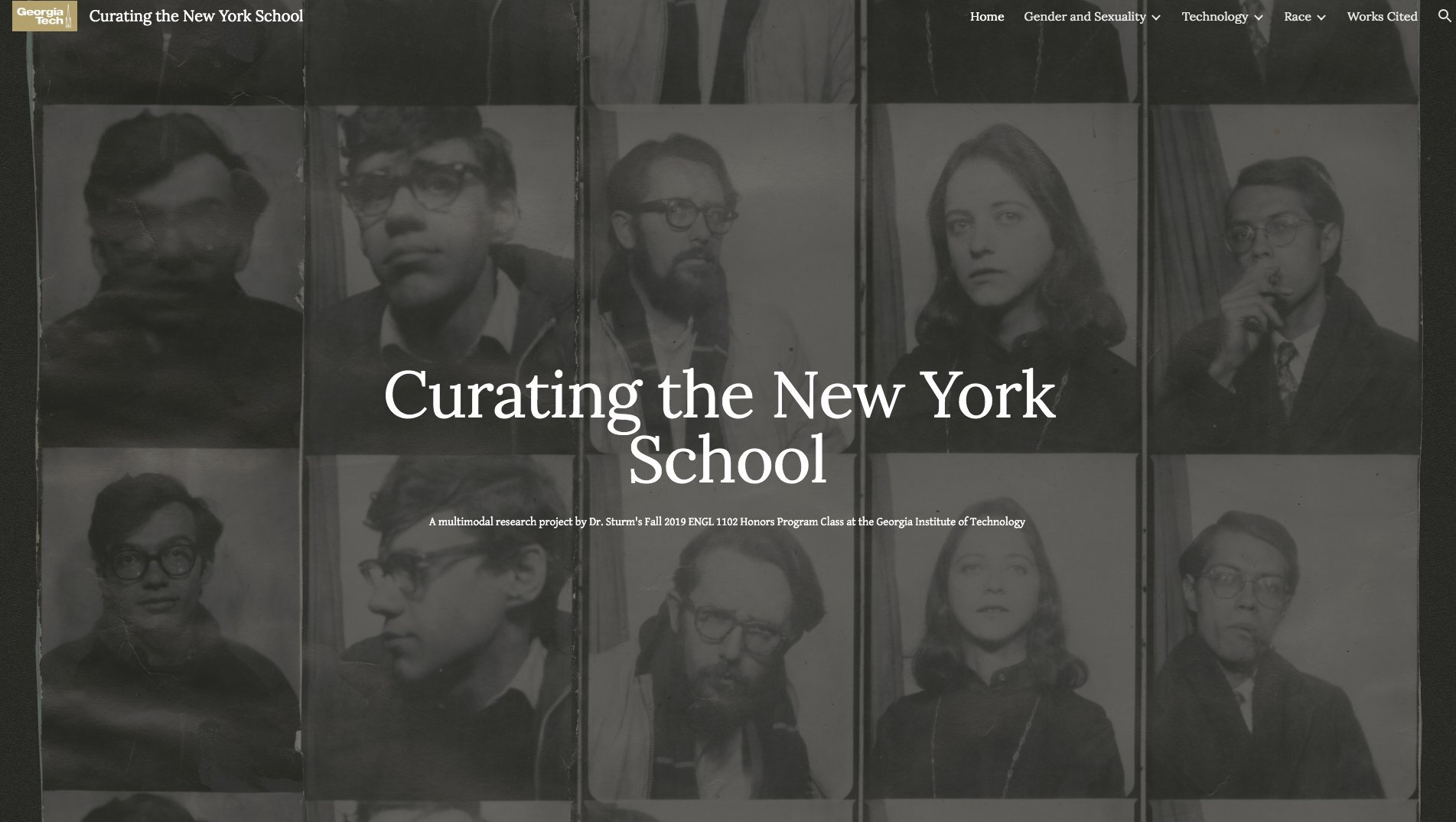
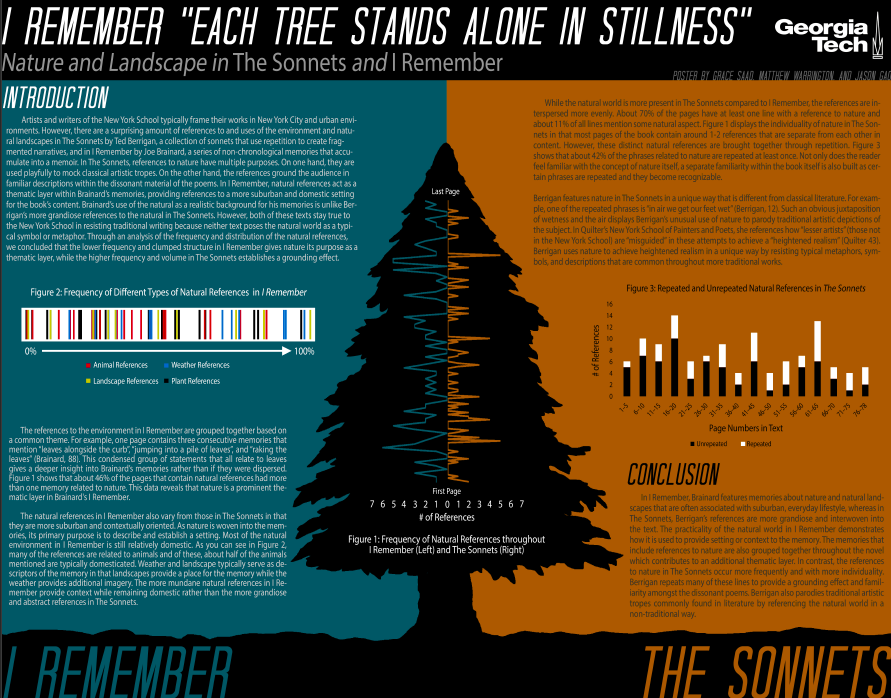

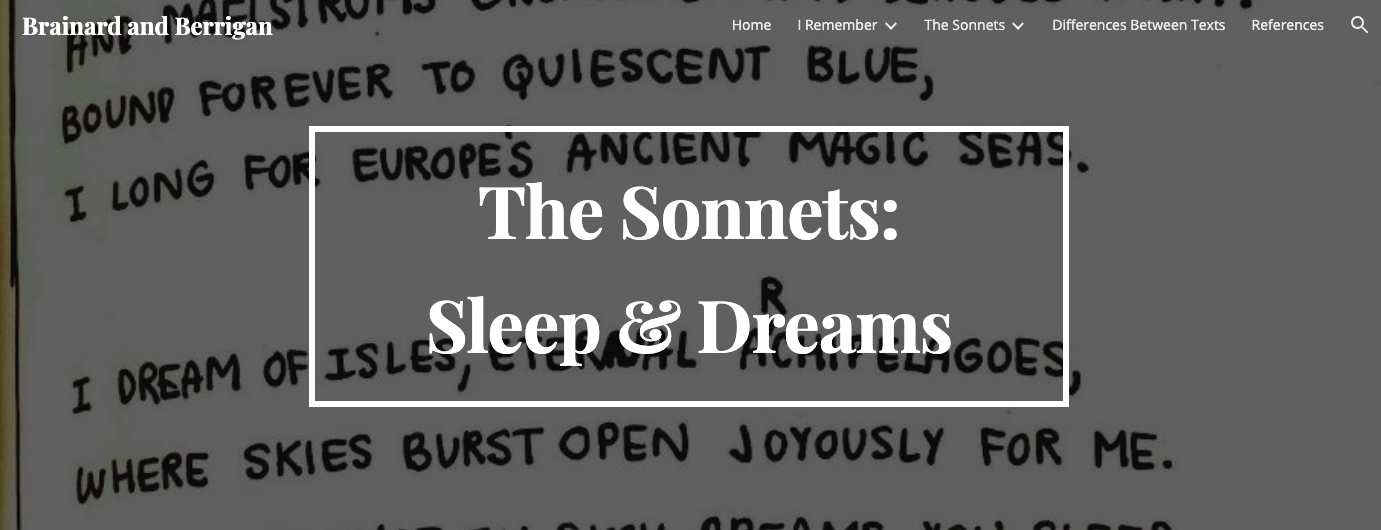

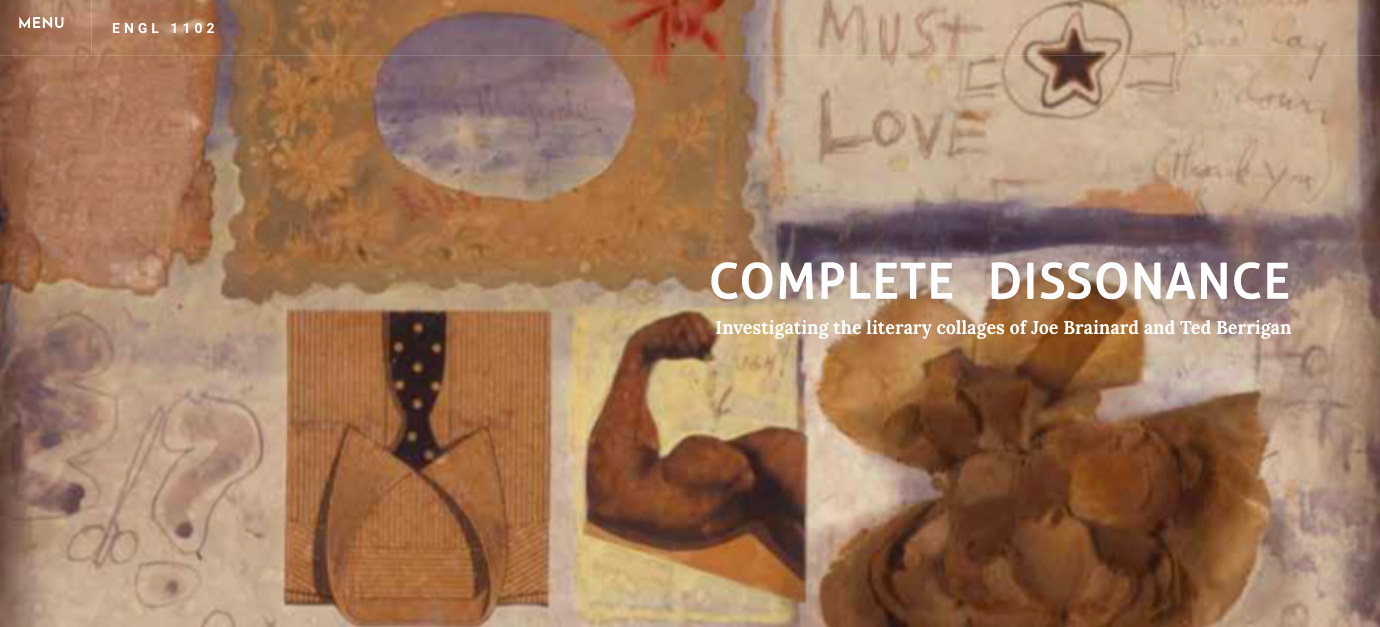
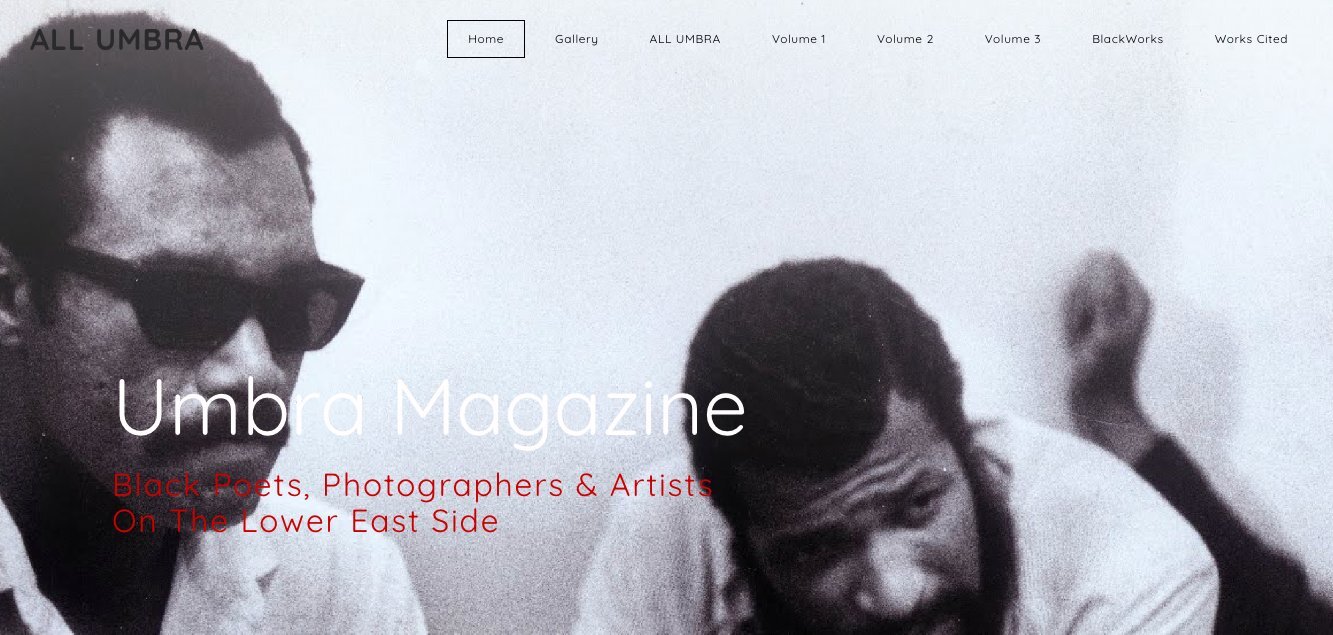
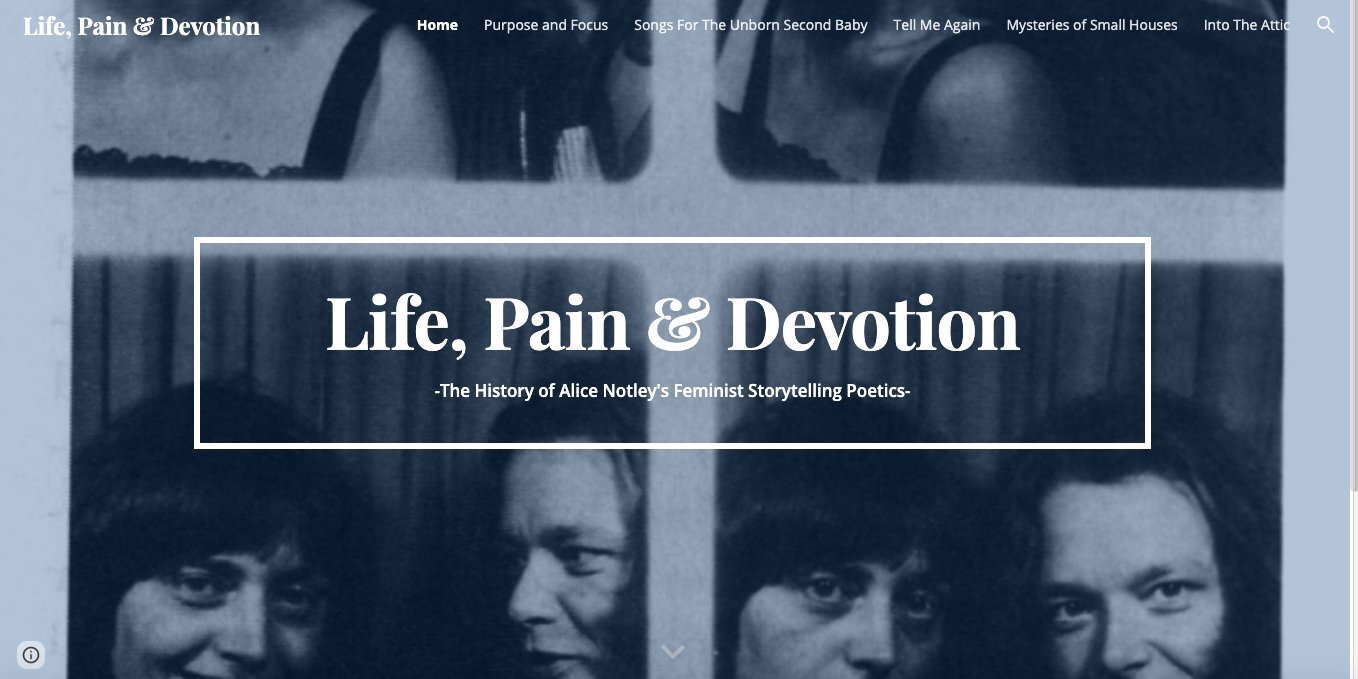
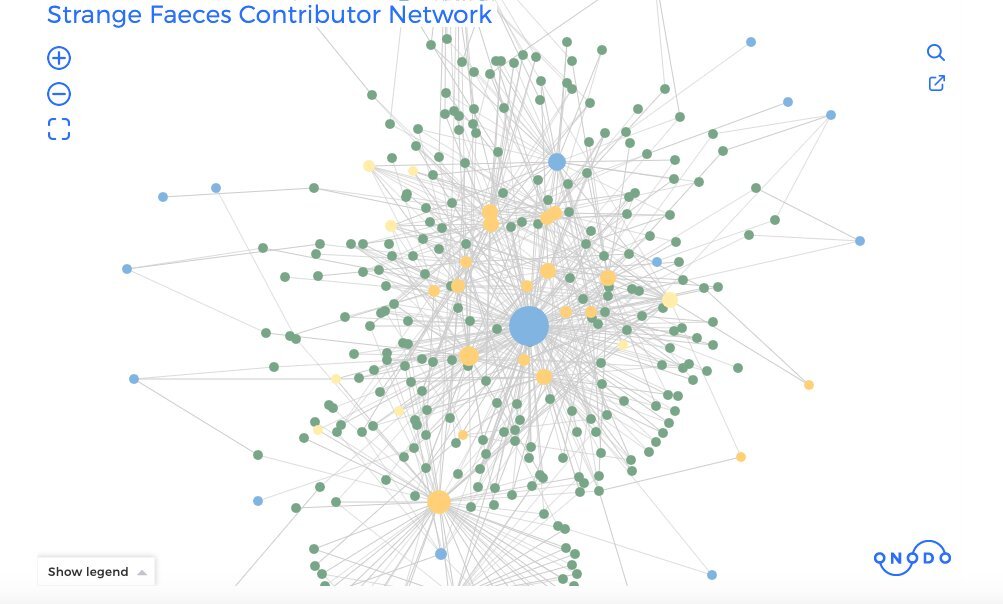

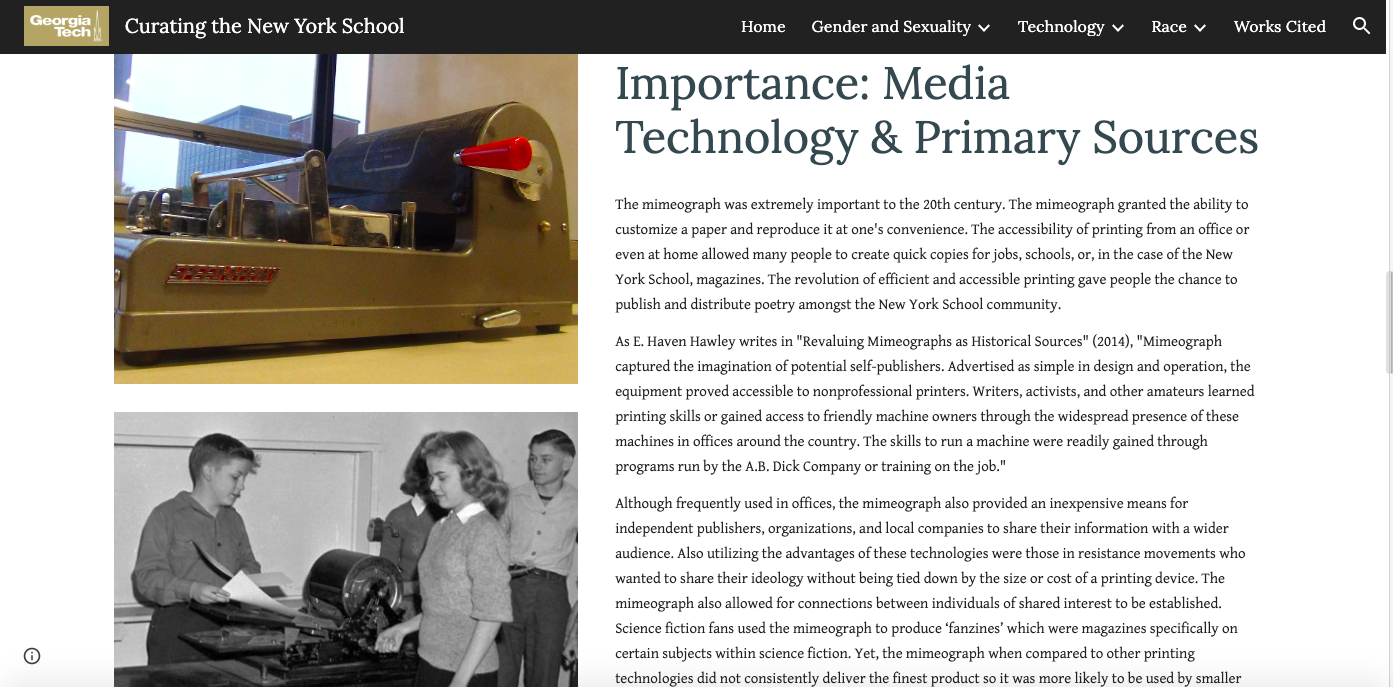
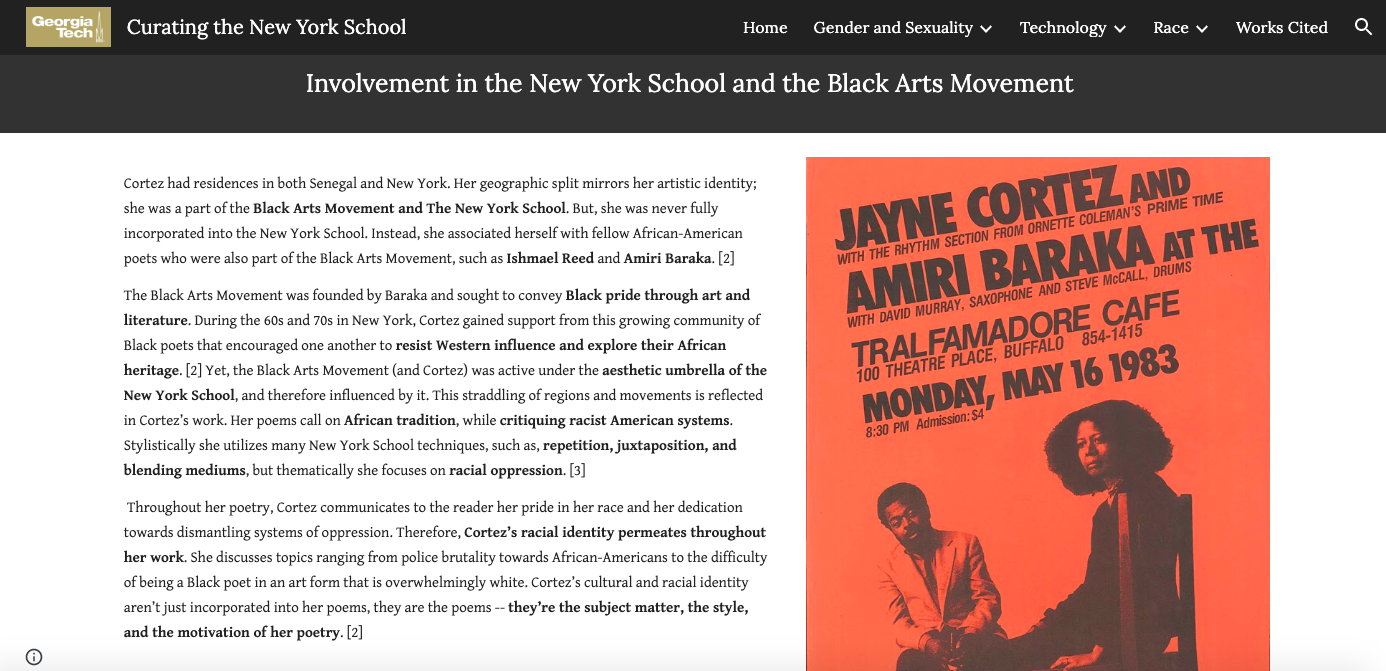
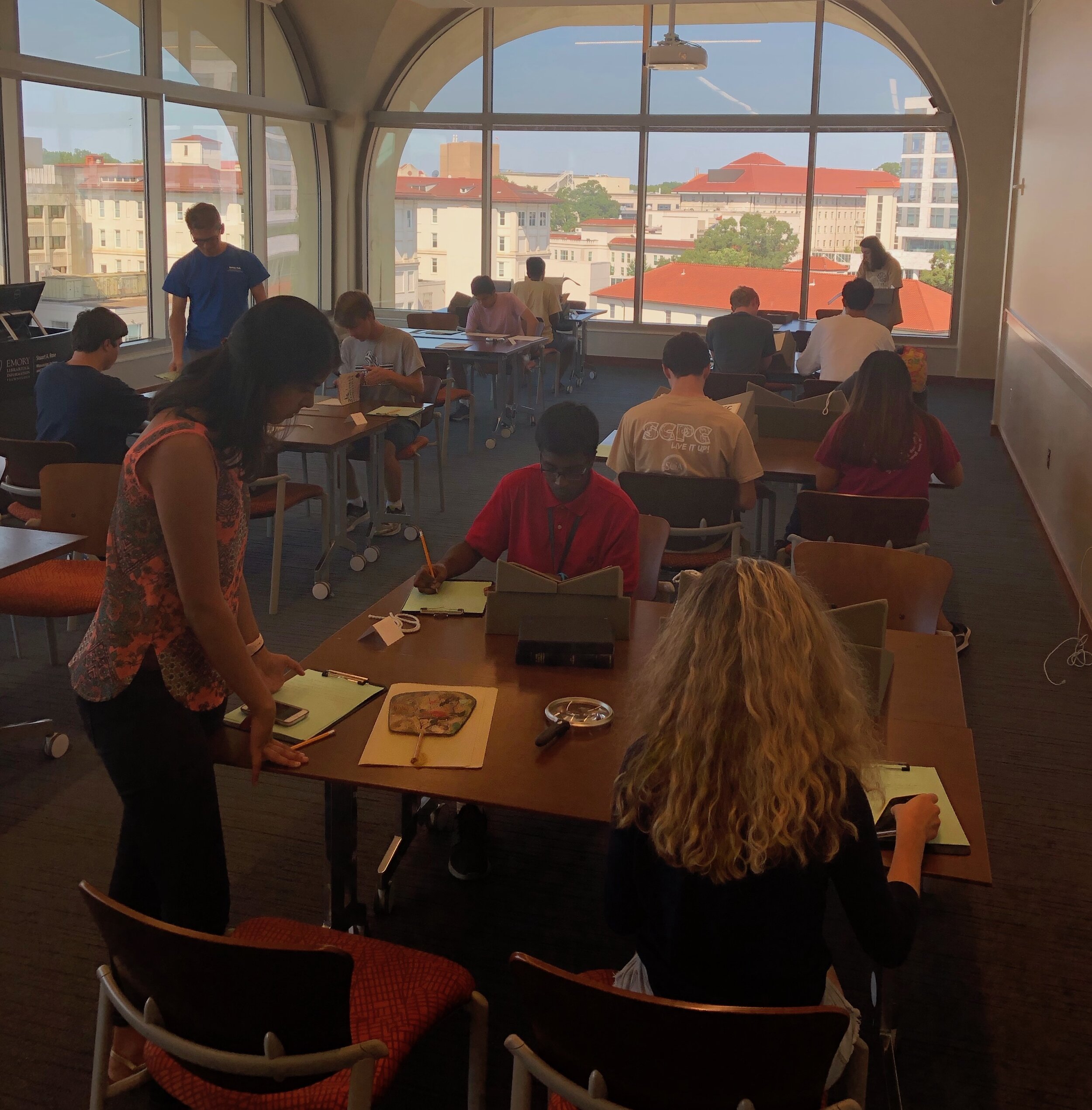
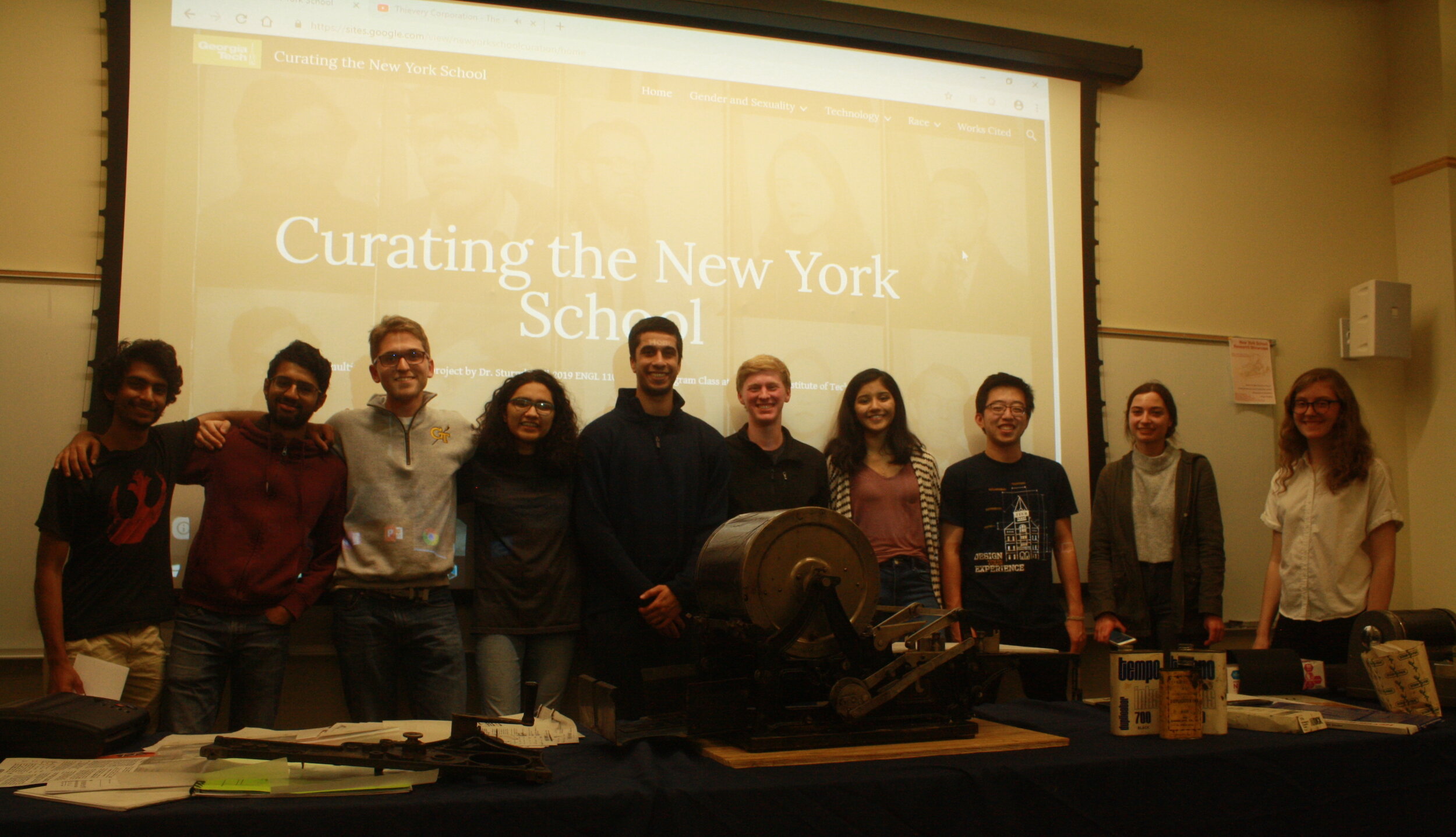

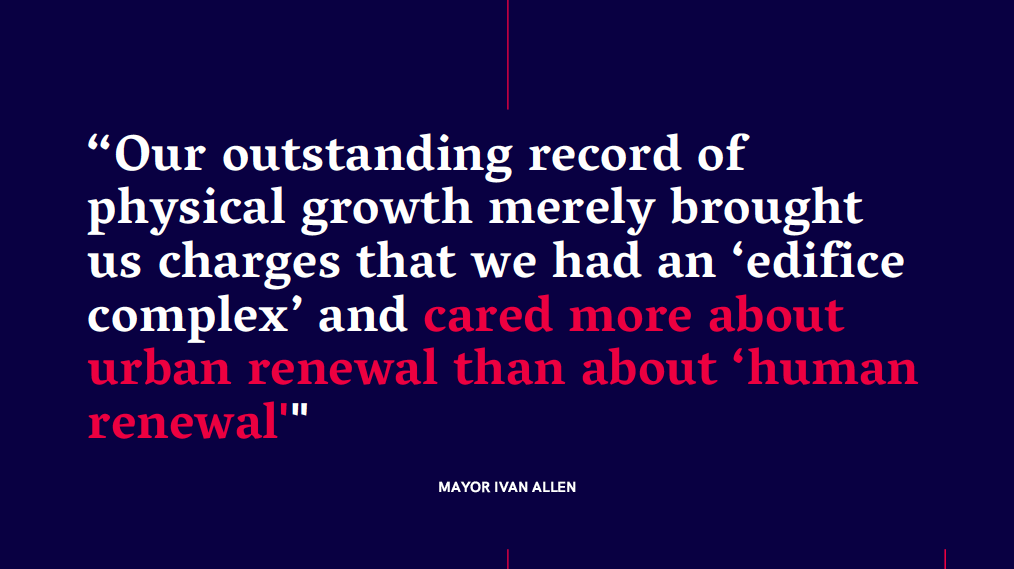
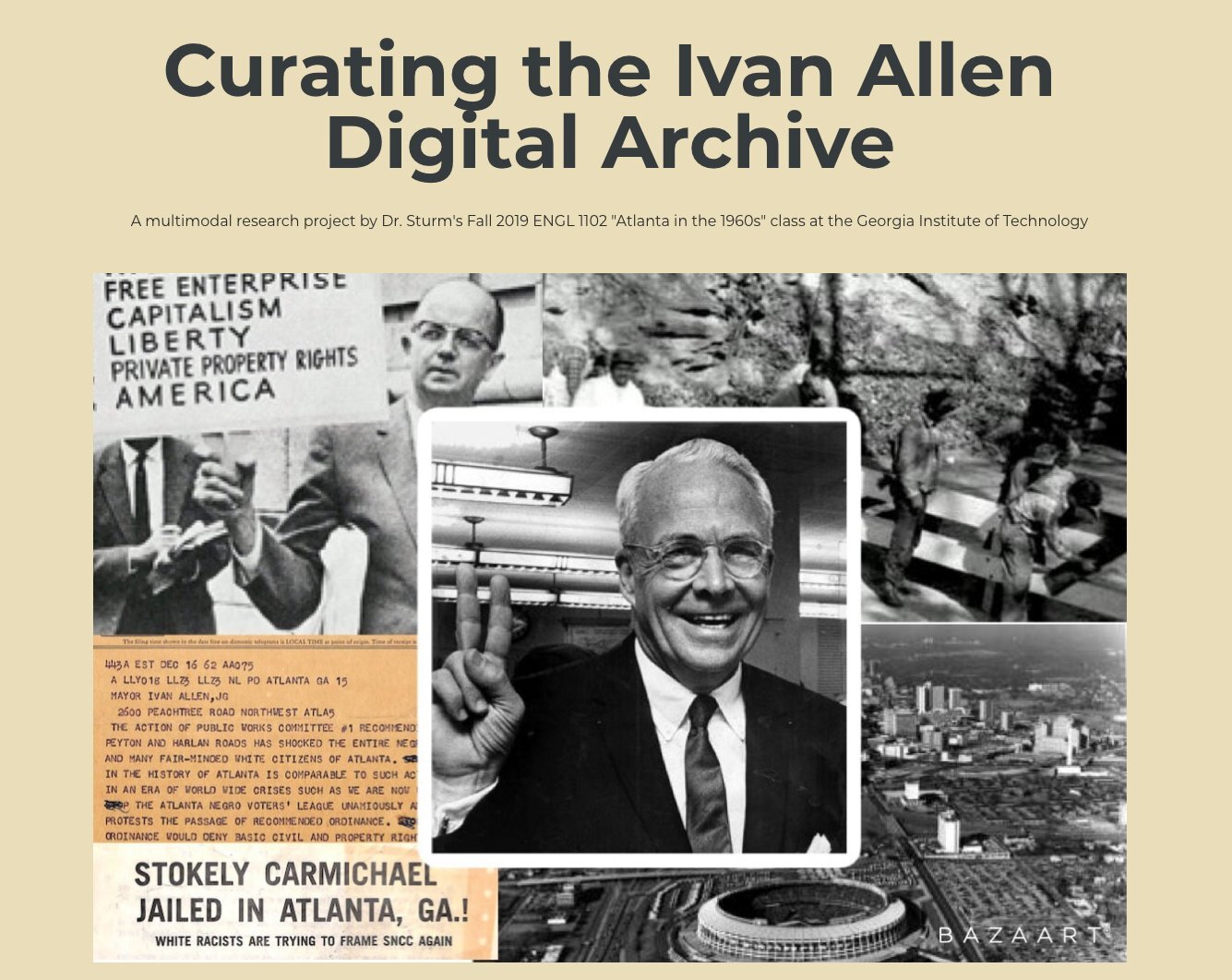
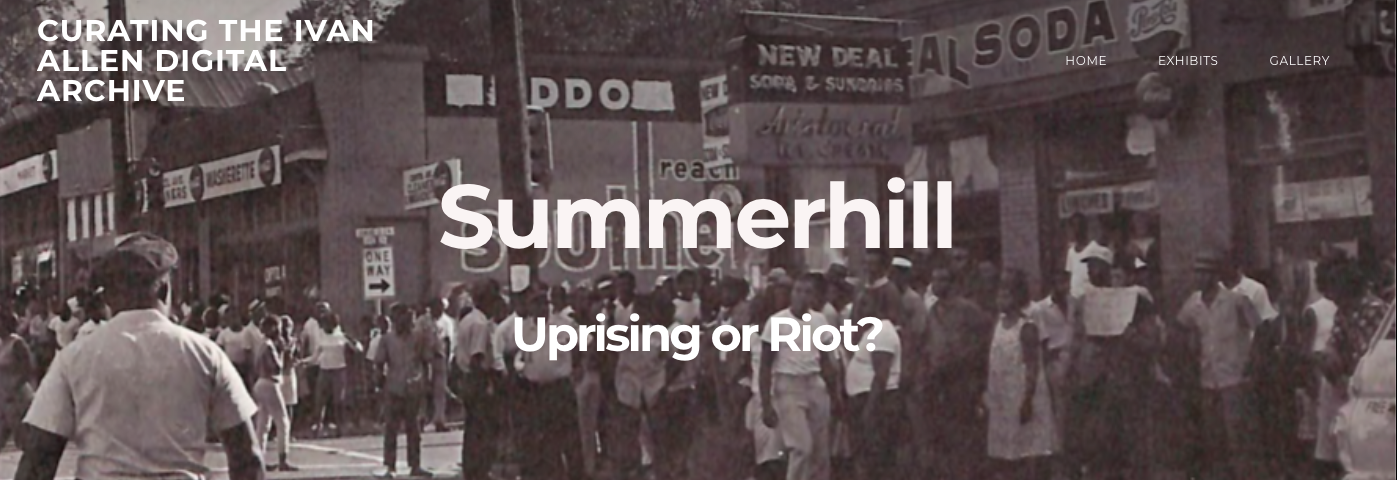
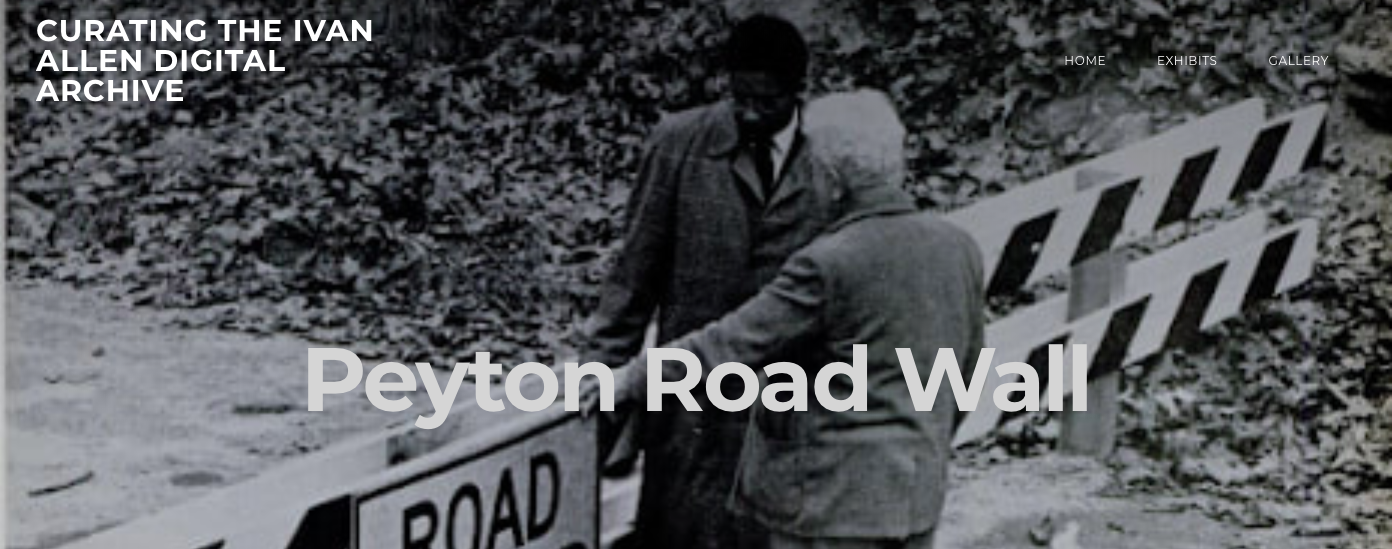



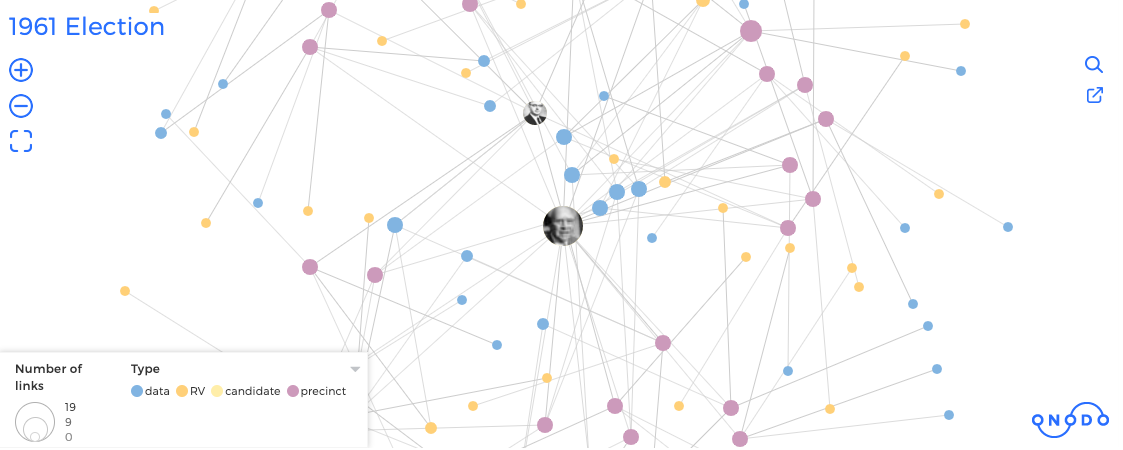




Summer 2019
ENGL 1102: The Poetics of Sustainability: Race and the Environment
This summer course was taught in conjunction with the second annual iGniTe First-Year Summer Launch Program’s “Sustainable Communities” academic track and supported by a course development grant from Georgia Tech’s Serve-Learn-Sustain initiative. Throughout the six-week semester, students volunteered at Aluma Farm, a sustainable urban farm on the Westside BeltLine in Adair Park, attended a lecture by Professor Carol Anderson of Emory University on the intersection of civil and human rights at The Center for Civil and Human Rights, collaborated with the West Atlanta Watershed Alliance, and visited the gentrifying neighborhood of Summerhill while researching the history of that community. Students presented their Artifact #3 websites at the iGniTe Summer Showcase.
Utilizing our WOVEN curriculum, this course will explore the intersections of race and the environment as urgent social, political, and ecological issues through the lens of poetry. By reading across a global lineage of poets, including writers and artists from Chile, Denmark, and the United States, students will learn about the historical and contemporary intersections of race and environmental issues in order to create multimodal artifacts that engage with what we will refer to as a “poetics of sustainability.” One of the course’s primary questions will be: How do these writers and artists allow us to articulate a more equitable future for communities facing challenges related to racial injustice, inequity, environmental crises, and environmental racism? What does environmental injustice look like here in Atlanta? Where and how do issues of race and the environment overlap as we consider rhetorical strategies for articulating our questions, ideas, and solutions related to identity, nationality, nature, and culture?
Note: All student work used with permission with authorship noted when permitted.
***
Artifact #1: Experimental Index of Inger Christensen’s alphabet
Students worked in groups of five to create experimental indexes for Inger Christensen’s alphabet that track the sequence’s references to science, metaphysics, time, the human, and the nonhuman. While an index in a book is traditionally a list of items, such as topics or names, treated in a printed work that gives for each item the page number where it may be found, these experimental indexes record the ephemeral, overlapping, and not-so-obvious topics that serve as the thematic and critical background for Christensen’s poetic sequence. As students read and re-read the poem with their attention trained to inventory specific themes and concepts, the process of reading subtly shifted and transformed, and students reflected these changes in the reading process in a collaborative note accompanying their finished indexes.
“Human” Experimental Index by Adam Kashlan, Chandler Pearson, Kate Chung, Ryan Schumann, Zane Kashlan
“Science” Experimental Index by Gabe Jones, Will Skillen, Jake Harmon, Sabina Maranto, Lily Arnold
“Nonhuman” Experimental Index by John Beavers, Josh Braun, Lora Tomova, Leah Tuck, Hannah Wagner
“Time” Experimental Index by Rommi Kashlan, Angelica Nguyen, Tanner Marvets, Aziza Ahmed, Saulye Nichols
“Metaphysical” Experimental Index by Rachael Germany, Rachel Brian, Jayden Kimbro, Forrest Crayford, Aditi Shekhar
***
Artifact #2: The Poetics of Civil and Human Rights
Students worked in groups of three and in conjunction with a field trip to The Center for Civil and Human Rights to produce websites that present a multimodal digital exhibit related to the poetry books Citizen: An American Lyric by Claudia Rankine and Song for His Disappeared Love by Raúl Zurita. Beginning with critical discussions in class about these two books, which we will read side-by-side, students will develop a working aesthetic vocabulary about the texts that will develop into a specific argument about how these poems address issues of civil and human rights. The digital exhibit that students create will be based on the design and rhetorical purposes of the exhibit on civil and human rights that students see at The Center for Civil and Human Rights. In other words, this artifact gives students an opportunity to present a thesis about how these books’ speak to issues of civil and human rights—similar to a traditional research paper—but in the form of a museum-like digital exhibit.
Artifact by Jayden Kimbro, Ryan Schumann, Lora Tomova
Artifact by Tanner Marvets, Kate Chung, Aditi Shekhar
Artifact by Rommi Kashlan, Chandler Pearson, Hannah Wagner
***
Artifact #3: Researching the Ivan Allen Digital Archive
For this research project, students worked in groups of five to utilize the Ivan Allen Digital Archive to produce artifacts that explore major historical issues of racial and environmental inequity during Mayor Ivan Allen Jr.’s tenure as the 52nd Mayor of Atlanta (1962-1970). The Ivan Allen Digital Archive is a digital archive hosted by Georgia Tech since 2016. It contains over 10,000 documents related to Allen’s mayoral tenure including a range of important material related to civil rights, housing policy, urban renewal, mass transit, discriminatory policing, and environmental injustice. While operational, the Ivan Allen Digital Archive has yet to be widely utilized in Georgia Tech classes. Students created websites that focus on one of the three major issues addressed in the archive—the Summerhill Riots of 1966, Mayor Allen’s support of the Civil Rights Act of 1964, or the pollution of Proctor Creek in Atlanta’s Westside neighborhoods in 1967—in order to contextualize and create accessibility to the digital archive for scholars, activists, and community members interested in the history of racial and environmental inequity in Atlanta. These sites serve as valuable examples of research-based student use of the archive that will facilitate future support of the archive’s development and sustainability.
“Ivan Allen Digital Archive: The Summerhill Riots” by John Beavers, Josh Braun, Lora Tomova, Leah Tuck, Hannah Wagner
“Atlanta’s Intervention in the Civil Rights Act: From the Ivan Allen Digital Archive” by Adam Kashlan, Chandler Pearson, Kate Chung, Ryan Schumann, Zane Kashlan
“The 1967 Pollution of Proctor Creek” by Rachael Germany, Rachel Brian, Gabriel Jones, Forrest Crayford, Will Skillen
***
Student reflections on the course:
“The best aspects of this course were the relevancy of the topics discussed, such as Atlanta's history and its impact on the Civil Rights Movement. I really enjoyed this topic of class because it was interesting to learn about the history of the city that I now call home. This class offered an entirely new perspective on sustainability and the environment as well, and I've never had that type of curriculum taught to me before. I enjoyed the subjects of the class.”
“The extracurricular activities woven into this course were highly effective. Dr. Sturm made a trip to a local urban farm extremely relevant to our study of environmental racism and Atlanta's history. Experiential learning was a large part of this class, making the gravity of each case study more apparent over the short semester.”
“This course was extremely informative and helped me learn so much about gentrification and the environment and how it all ties together with displacement and inequity amongst certain areas of Atlanta, along with how it is communicated through poetry.”
“This class has been an eye-opener for the contemporary issues that we face today that have roots in the past.”
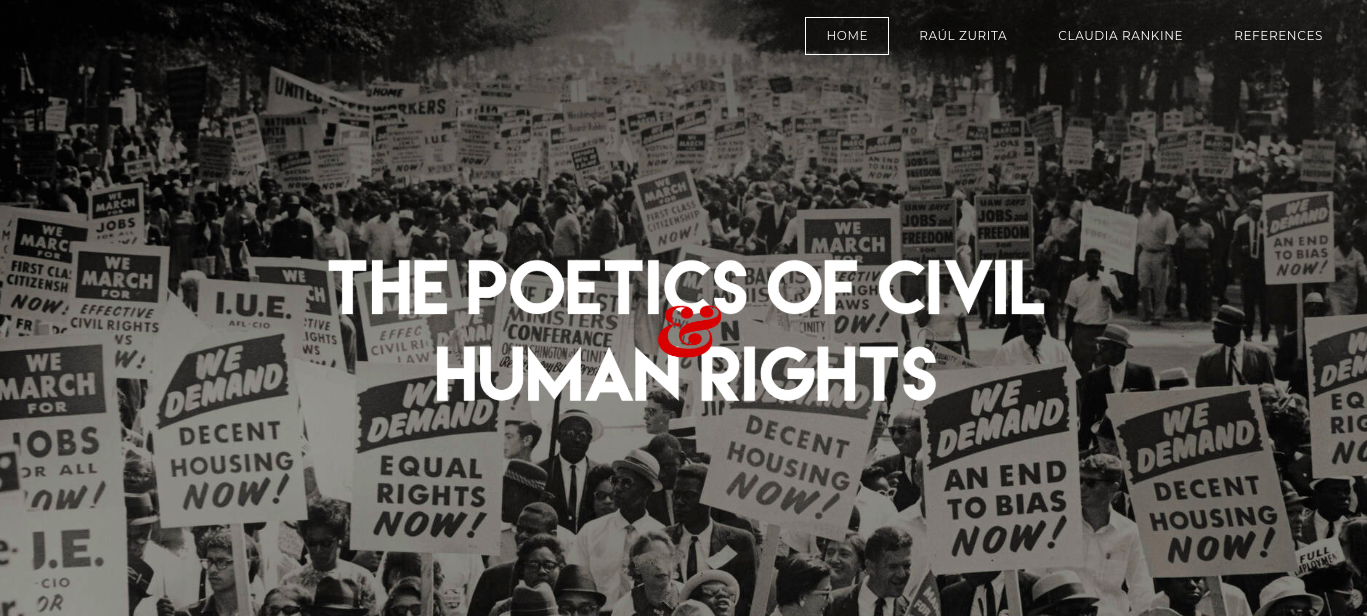

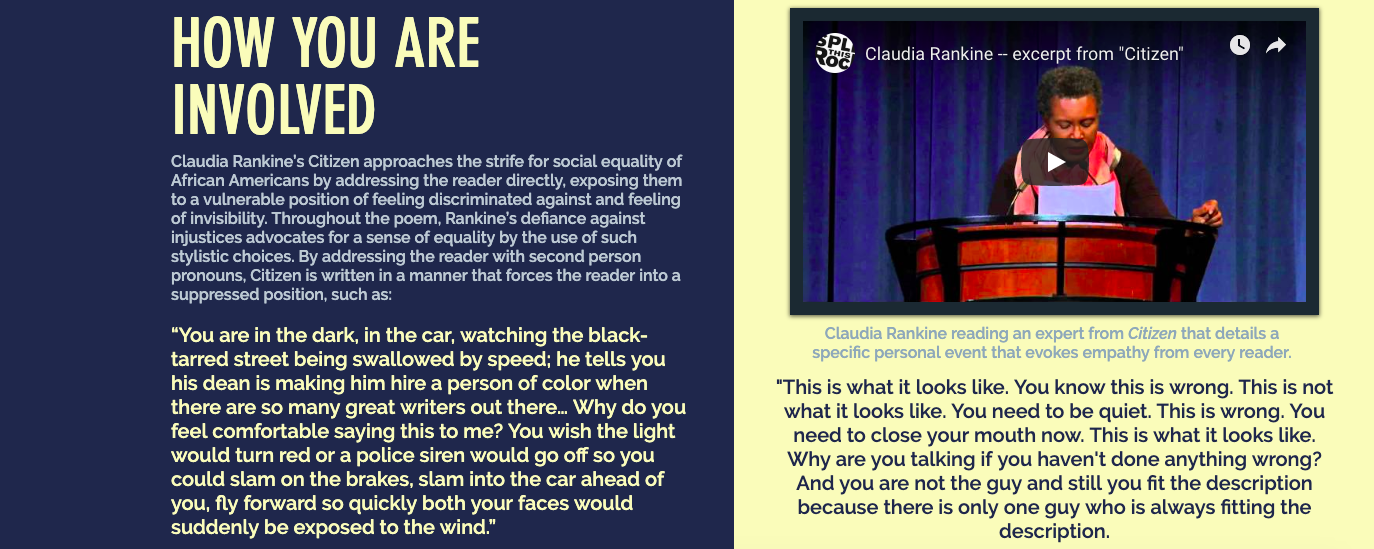
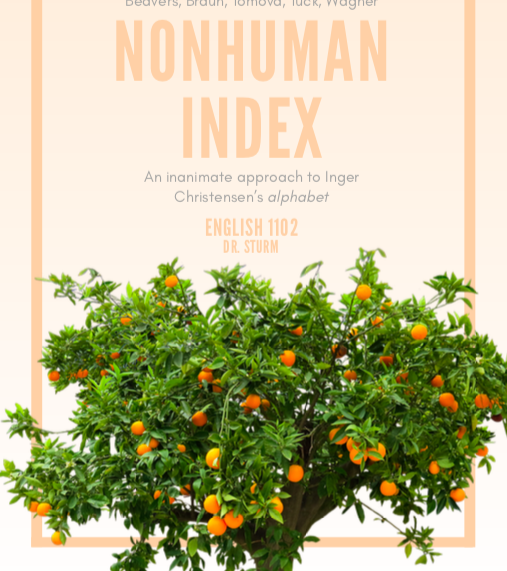

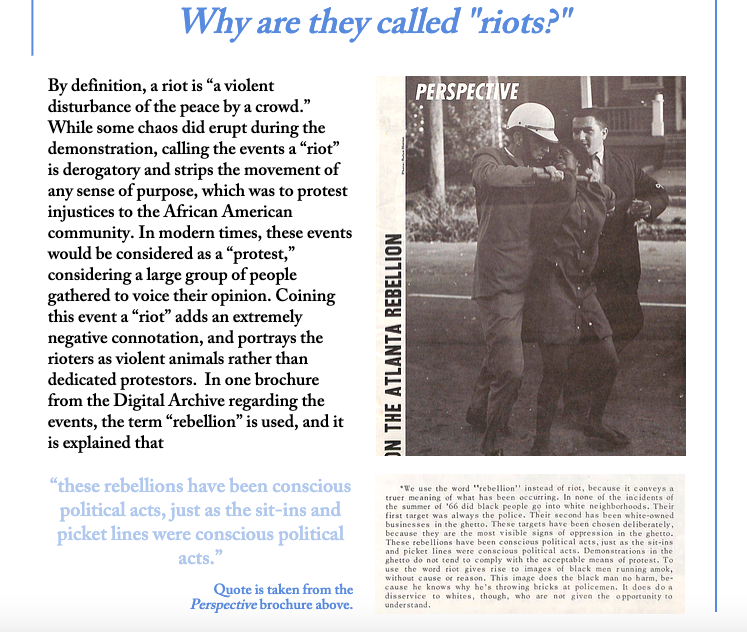
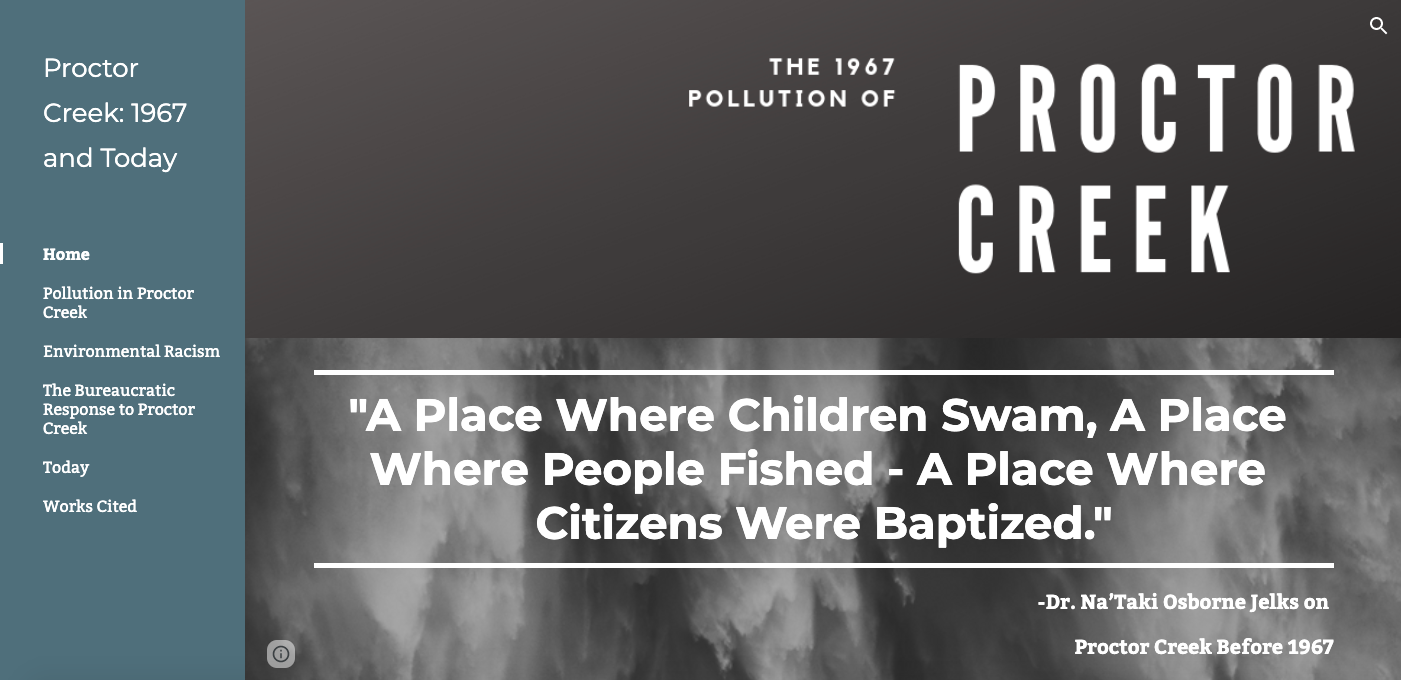
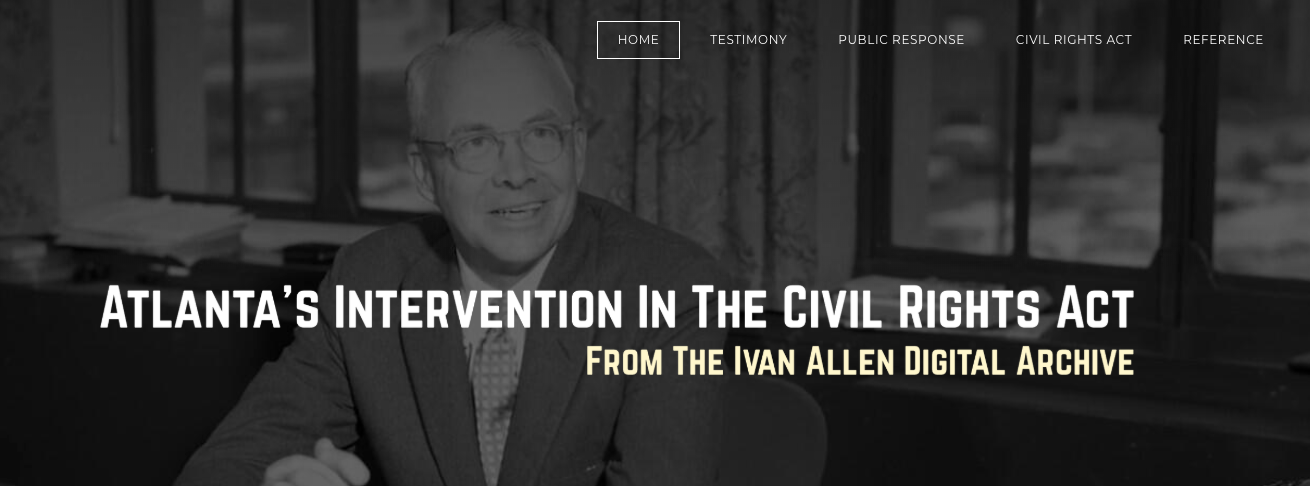
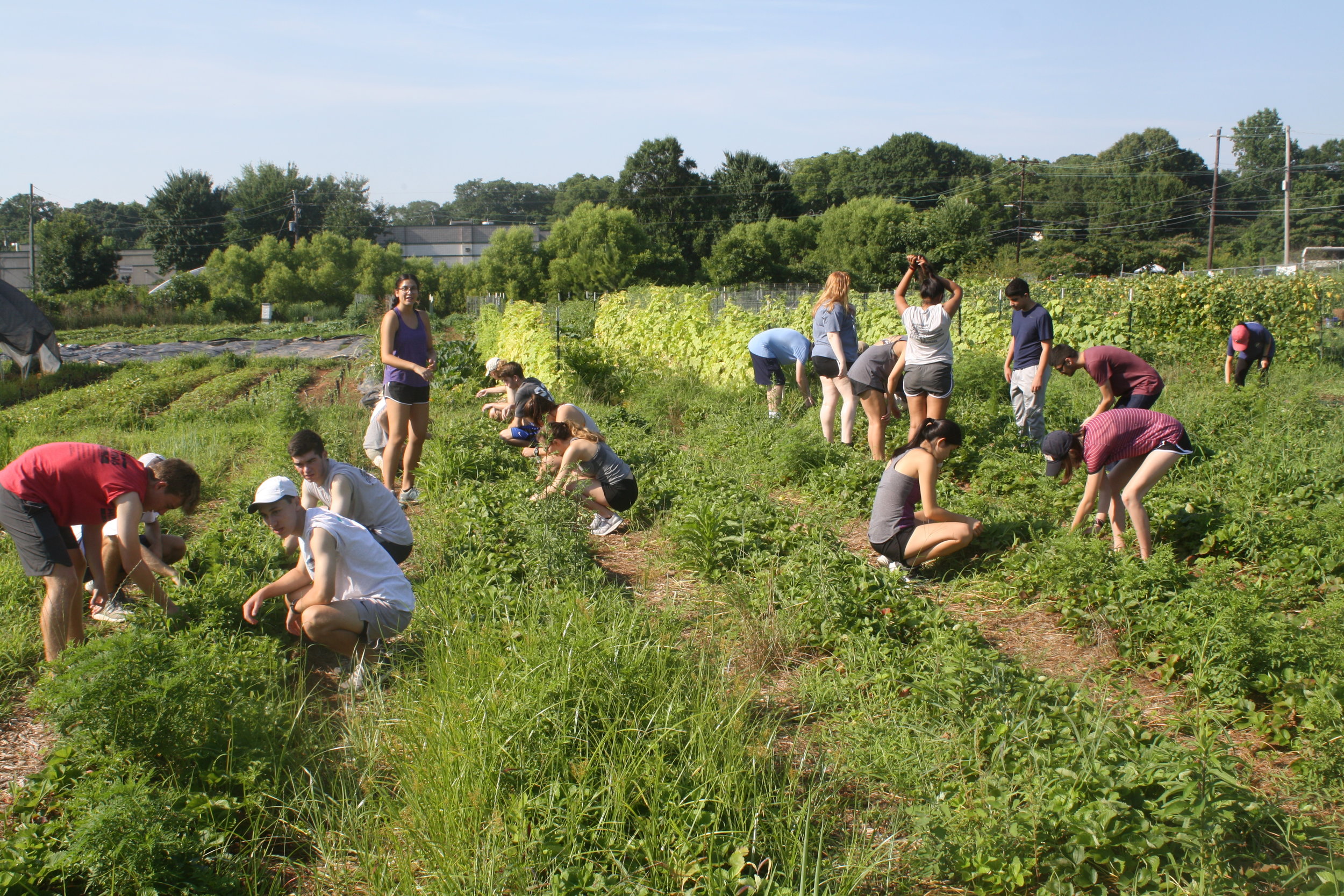
Spring 2019
ENGL 1102: Poetry, Painting, and Film in New York City, 1960-Present
This course will utilize poetry, painting, and film from New York-based writers and artists to explore the multimodal languages of American art practices. By activating the etymological root between the words experiment and experience—“experiri,” meaning “to try or to test”—this course will try and test various creative and critical approaches to the arts to gain an experiential, historical, and rhetorical understanding of aesthetic innovation in the global cultural center of New York over the last half century. Utilizing our WOVEN curriculum, students will engage with visual and nonverbal design through trips to Atlanta's High Museum of Art and Arts@Tech events, create original research projects, and experiment in hands-on creative and critical practices. Artists such as Amiri Baraka, Jay-Z, Frank O'Hara, Eileen Myles, and Andy Warhol will populate the syllabus.
This writing and communication course will approach these artists and the questions their work provokes in contemporary American culture. We will actively participate in and contribute to this aesthetic discourse in the effort of developing effective strategies of WOVEN (written, oral, visual, electronic, and nonverbal) communication, interrogating New York-based art and artists to understand and critically appreciate the intersections of art, culture, history, place, and technology.
Note: All student work used with permission with authorship noted when
***
Artifact #1: Literary Research Poster
In groups, students will produce visual posters that highlight original and unique correspondences between Joe Brainard’s I Remember and Ted Berrigan’s The Sonnets. Rather than a traditional book review or essay translated into a poster presentation, this visual artifact will investigate these related yet divergent texts through a specific thesis, utilizing textual evidence, secondary critical sources, and your accumulated knowledge of the New York School of Poets aesthetic. Students will show their posters during an informal full class presentation day. For example, students might generate literary maps of the texts, explore the role of repetition and variation, investigate the texts as social documents of their times, construct aesthetic lineages for each text, explore the role and presence of related mediums such as music, painting, or film on the texts, research the texts’ histories of critical reception, investigate the books through the lens of gender and sexuality, create a unique data visualization of the texts, or any other critical approach you can image. Keep in mind that your argument must be presented primarily through visual graphics supported by textual analysis and description.
“The Art of Writing: Through the Usage of Color and Reference to the Community of Artists” by Nazli Demirkan and Ani Benge
“The Intersection of Visual and Verbal Mediums in Joe Brainard’s I Remember and Ted Berrigan’s The Sonnets” by Avni Shridhar and Connor Koelsch
***
Artifact #2: Podcast on Visual Art
As a group, students will create an 8-10 minute podcast episode that investigates and describes a single piece of visual art created by a New York City-associated or New York School visual artist. Consider “The Lonely Palette” podcast as a guiding example of how to approach your podcast planning and design. The podcast will 1) address the aesthetic, historical, and cultural context of the piece, and 2) might also consider the political and biographical narratives accessible via the work. This podcast will be an informational, entertaining documentary snapshot of a particular visual artwork and the artist who created it. The primary goal of this artifact is to develop a competent, functional aesthetic vocabulary in order to describe visual art in an oral medium.
Student podcast on “Grand Street Brides” (1954) by Grace Hartigan
Student podcast on “A Jar of Forsythia” (1990) by Jane Freilicher
Student podcast on “Wall Drawing 901” (1999) by Sol LeWitt
Student podcast on “Nancy Diptych, no. 283” (1974) by Joe Brainard
***
Artifact #3: New York School Research Project
This artifact will allow you to pick a New York School artist and create an original research project investigating that artist’s work. The project will be in the medium and genre of your choosing. Projects can & should be imaginative but always with a succinct focus on research. Consider a website, digital atlas, research into a particular NYS magazine/zine, data visualization, series of approved Wikipedia pages, a short documentary film, a NYS app, or other multimodal projects. A series of research support documents, including a research proposal, outline, and progress report, will aid in the artifact’s completion. Each project will include a 1000-word Research Statement. This mini-essay will articulate the artifact’s purpose, research findings and analysis, and describe the artifact’s contribution to the field of study.
“The New York School in Chicago: The Yellow Press” by Ani Benge
“The World Magazine: A Poetry Project Data Visualization” by Alvin Chiu
“Exploring the Depths of Black Nationalism and Amiri Baraka” by Zahraw Shaw
“Translations of the New York School” by Yukina Yajima
“Write-In Myles ‘92” by Avni Shridhar
“Comics and High Art in the 1960s” by Grace Krahn
“Exploring the Structure of Repetition in The Sonnets: A Literary Data Analysis” by Caleb Partin
“Schuyler’s Species” by Dorien Minor
“A New York School Magazine: Personal Injury” by Debbie Ku
“Dress Like a Chelsea Girl: Understanding Fashion and the New York School” by Beth McKoy
“Television: Where Punk and Poetry Meet” by Eli Ruckle
“Homer Erotic: The All Female Poet’s Band” by Katherine Starcher
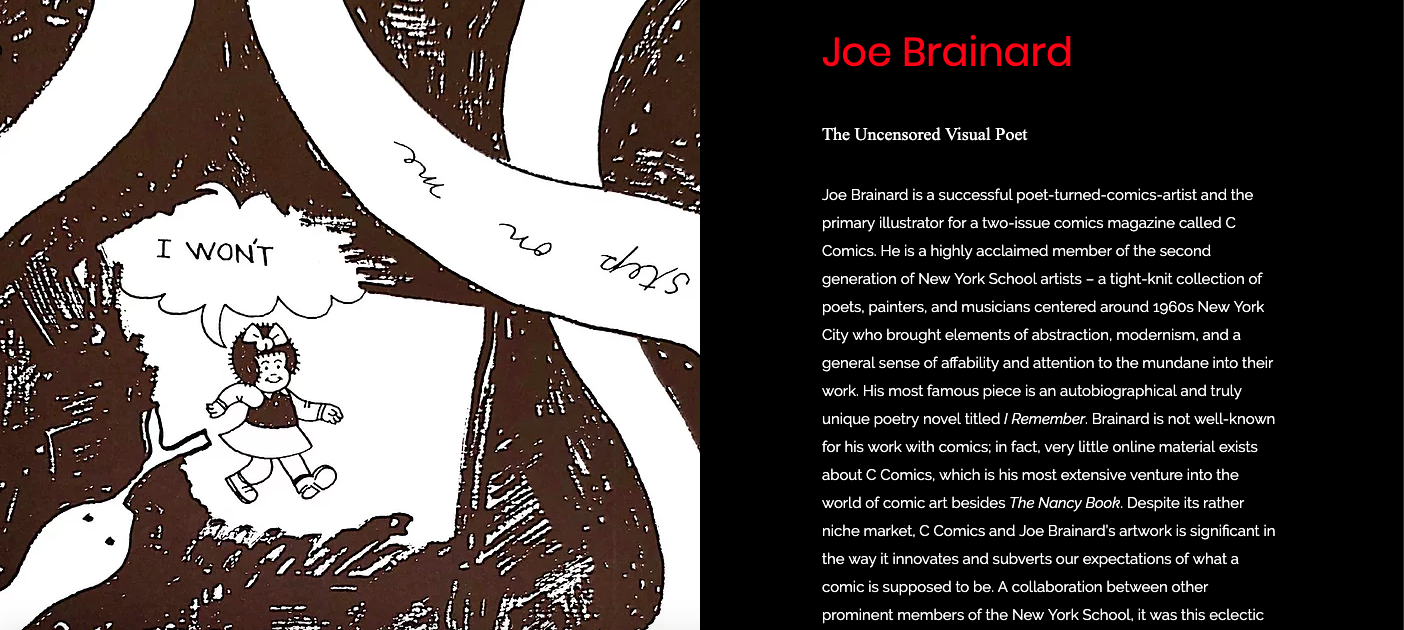
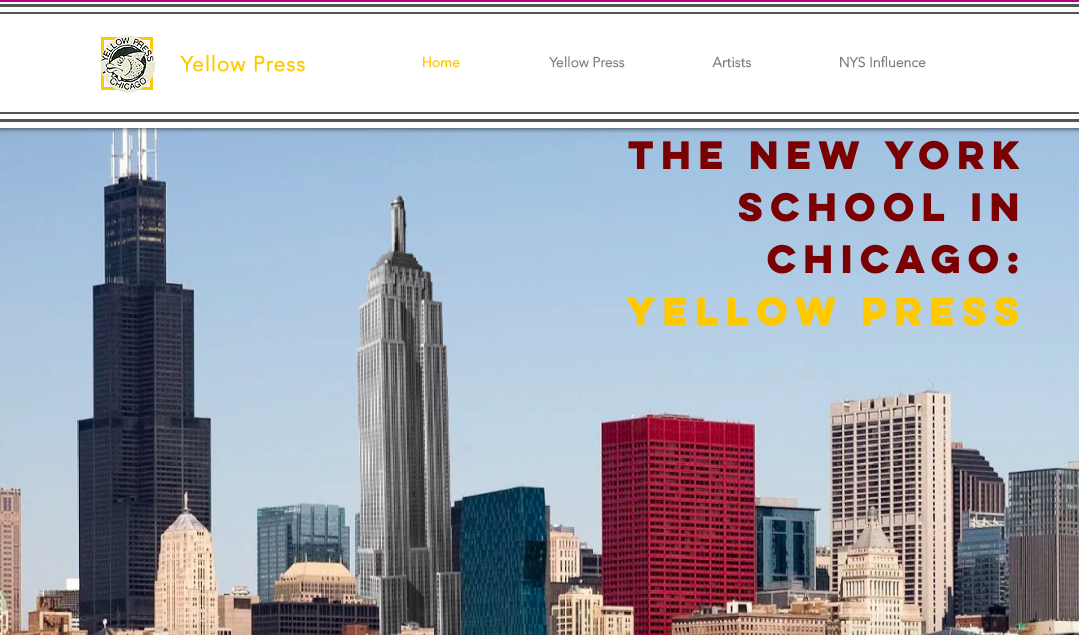
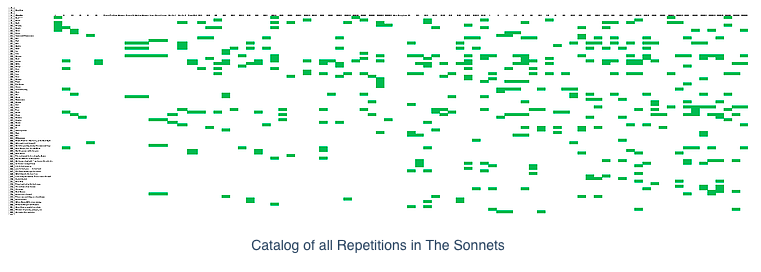

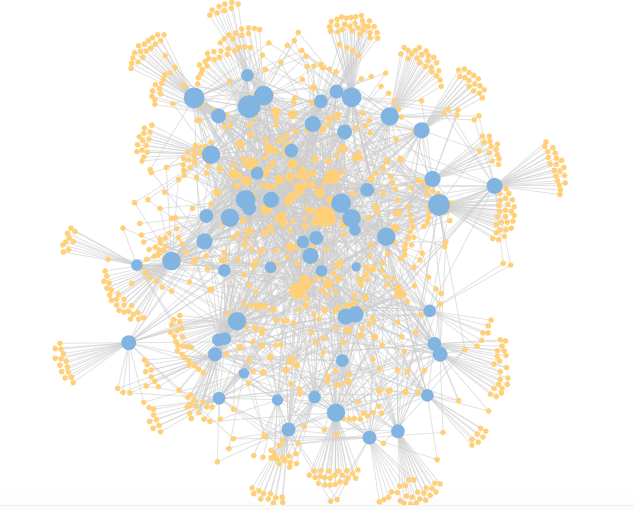
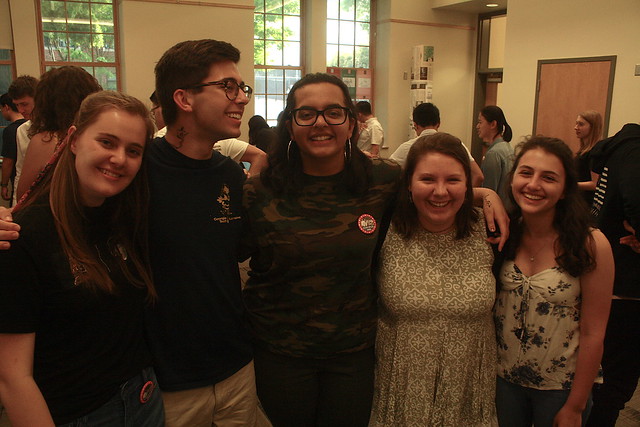

Fall 2018
ENGL 1102: “We Are Young": Teens, DIY, and the Avant-Garde
Whether you’re singing along to “Teenage Lobotomy” by The Ramones or “Teenage Dream” by Katy Perry, experimentation and rebellion remain the trademarks of youth culture. From The Breakfast Club to the teen leaders of the #NeverAgain movement, media continually reproduces our collective belief that adolescents, the young, the coming-of-age, are the heroes and antiheroes sanctioned to make and remake their images and beliefs in the passionate, excessive, and defiant role of the teenager. At the same time, 20th century art has given us the avant-garde artist as the emblem of disobedience and aesthetic revolution. From the Futurists to the punks, art has been a DIY experiment in destroying the old to create the new.
This course will utilize poetry, literature, painting, film, and music to explore the intersections of youth, art, and do-it-yourself cultures. Focusing on the multimodal aesthetic of the New York School of artists while reading from earlier modernist texts through to recent iterations of teen life, students will develop historical, aesthetic, and experiential relationships to what it means to be young and make art. Utilizing our WOVEN curriculum, students will read experimental coming-of-age narratives, investigate the construction of adolescence as an identity, and make their own critical and creative artifacts that analyze and reimagine the rhetorics of youth culture.
Note: All student work used with permission with authorship noted when permitted.
***
Artifact #1: “I Remember” DIY Zine and Podcast
Students read and discussed Joe Brainard’s I Remember as a portrait of mid-20th century American male adolescence and young adulthood, a portrait of queer male sexuality and pop culture, and a portrait of becoming an artist in multiple mediums. After writing and revising their own formal experiments in personal-poetic writing in the style of I Remember, students created original DIY zines that sample from their “I Remember” portraits. These zines are modeled on class readings about the history of zine culture and distributed to their peers. In groups, students shared their “I Remember”’s and zines to develop a 6-8 minute story-telling podcast segment that gathers their shared, differing, and overlapping themes of recent adolescence and culture. Building off the individual creative production of the “I Remember” zines, these podcasts act as group portraits of what it means to be a teenager in the 21st century.
DIY zine by Rachel Chin “It’s All Relative”
DIY zine by Eric Mei “The Looking Glass”
Student podcast “All By Myself," on what it’s like to be young and feel alone, and how being alone can be a good thing, by Eric Mei, William Touchstone, Anthony Rivera, and collaborators.
Student podcast “Adolescents Anonymous,” on the issue of fitting in, by Vince Li, Surya Akella, Shaan Dhawan, Yujia Gao, and Siyeon Park
Student podcast “Recess,” on youth and games, by Emily Glatter, Jennifer Thorpe, Amy Liu, Min Kim, and collaborator
***
Artifact #2: Literary Research Poster on Chelsea Girls and The Basketball Diaries
In groups, students produced visual posters that highlight original and unique correspondences between Eileen Myles’s Chelsea Girls and Jim Carroll’s The Basketbal Diaries. Rather than a traditional book review translated into a poster presentation, this visual artifact investigates these related yet divergent texts through a specific thesis, utilizing textual evidence, secondary critical sources, and your accumulated knowledge of the New York School of Poets aesthetic. For example, students might generate literary maps of the texts, explore the role of repetition and variation, investigate the texts as social documents of their times, construct aesthetic lineages for each text, explore the role and presence of related mediums such as music, painting, or film on the texts, research the texts’ histories of critical reception, investigate the books through the lens of gender and sexuality, conceptual a unique data visualization of the texts, or any other critical approach you can image. Keep in mind that any approach to the poster’s thesis should tie in with our main course themes: youth, DIY-culture, and experimental art. Students showed posters during an informal full class presentation day.
“The Authentic and the Synthetic: An Analysis of Relationships in The Basketball Diaries and Chelsea Girls” by Cody Kantor, Rachel Chin, and Prabir Vora
“‘I Just Want to be Pure’: Addiction and Inspiring Art” by Amy Liu, Anthony Rivera, and collaborators
***
Artifact #3: Collaborative Multimodal Research Essay on Jenny Zhang’s Sour Heart
In pairs, students produced a multimodal research essay that investigates redefinitions and/or critiques of coming-of-age narratives by exploring Jenny Zhang’s Sour Heart next to one other cultural source, such as poetry, a novel, film, music, or comic. Including multimodal elements, this 7-8 page research essay (including text and images) acts as a critical comparative look at two recent iterations of teenage culture and coming-of-age narratives both in how they compare and contrast to one another and in terms of what these cultural documents say about teen culture, the history of representations of adolescence, the differences in representation between modes and genres, and what is important about examining these two sources together in light of the questions posed by their theses. Students published thier essays on Issuu.
“The American Dream for White Teens: A Multimodal Essay on Fluency, Language, and Race in the American Coming-of-Age Narrative” by Grace Erlinger and Rachel Chin
“Redefining Identity Development for Minorities: Analyzing Sour Heart and The Hate U Give’s Insight on Identity Development Within Chinese-American and African-American Communities” by Preeti Merchant and Sarah Kline
“Is It Really A Shame To Be Sour?: Exploring the Cycles of Poverty Shown in Sour Heart and Shameless" by Taryn Edwards and Siyeon Park


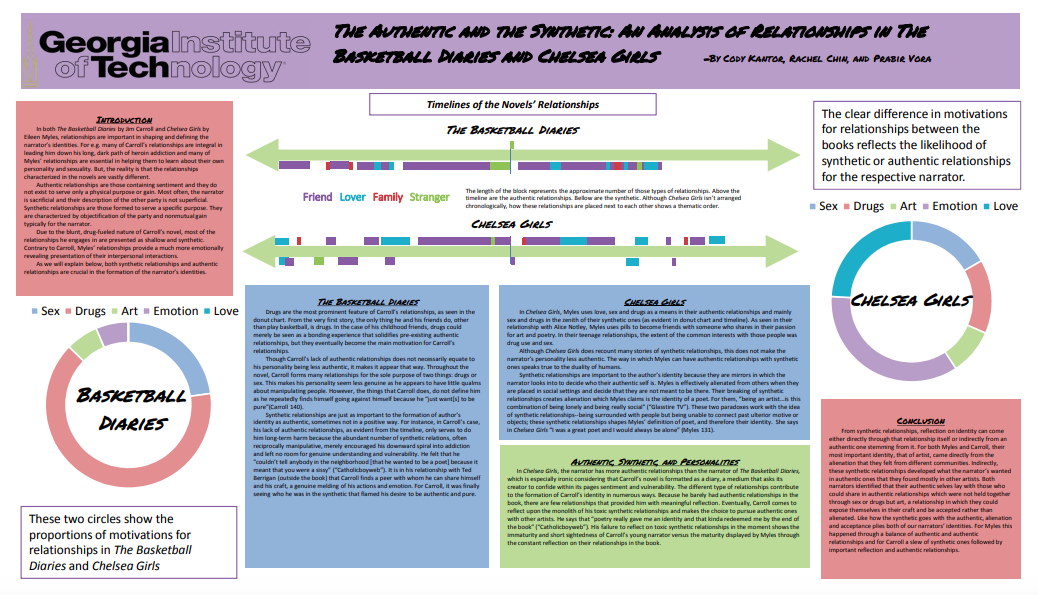


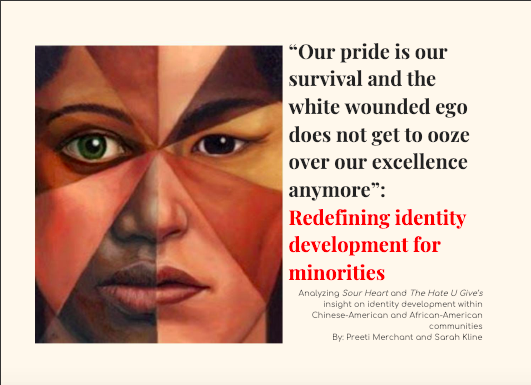
Summer 2018
ENGL 1102: The Poetics of Sustainability: Environment and Immigration
Utilizing our WOVEN curriculum, this course will explore the intersections of the environment and immigration as urgent social, political, and ecological issues through the lens of poetry. By reading across a global lineage of poets, including writers and artists from Pakistan, Chile, Sweden, Korea, Brazil, Cuba, and the across the United States, students will learn about historical and contemporary environmental and immigration issues in order to create multimodal artifacts that engage with what we will refer to as a “poetics of sustainability.” One of the course’s primary questions will be: How do these writers and artists allow us to articulate a more equitable future for communities facing challenges related to ecology and immigration? Additionally, where and how do ecology and immigration issues overlap as we consider rhetorical strategies for articulating our questions, ideas, and solutions related to identity, nationality, nature, and culture?
This summer course was taught in conjunction with the inaugural iGniTe First-Year Summer Launch Program’s “Sustainability” academic track and supported by a course development grant from Georgia Tech’s Serve-Learn-Sustain initiative. The final photo in the gallery to the left shows my students and I volunteering with Concrete Jungle at Doghead Farm, an urban growing space in Southwest Atlanta that donates foraged and grown fruits and vegetables to those in need.
Note: All student work used with permission with authorship noted when permitted.
***
Artifact #1: Experimental Index of Inger Christensen’s alphabet
Students worked in groups to create experimental indexes for Inger Christensen’s alphabet that track the sequence’s references to science, metaphysics, time, the human, and the nonhuman. While an index in a book is traditionally a list of items, such as topics or names, treated in a printed work that gives for each item the page number where it may be found, these experimental indexes record the ephemeral, overlapping, and not-so-obvious topics that serve as the thematic and critical background for Christensen’s poetic sequence. As students read and re-read the poem with their attention trained to inventory specific themes and concepts, the process of reading subtly shifted and transformed, and students reflected these changes in the reading process in a collaborative note accompanying their finished indexes.
“Human” Experimental Index by Gavin Perlman, Jun Hyuk Jeon, and collaborators
“Science” Experimental Index by Vanessa Ahn, Kiet Vong, Sarah Kallis, and collaborators
“Nonhuman” Experimental Index by Robert Weimar, Tessa Stanton, Ashley Duong, and collaborators
“Time” Experimental Index by Brooke Waller, Elijah Tan, Anneliese Blevins, and collaborator
“Metaphysical” Experimental Index by Uchenna Godwin Offor, Radhesh Amin, Danny Nguyen, and collaborators
***
Artifact #2: The Rhetoric of Loss
What is the rhetoric of loss, dislocation, transformation? This multiple-week, slowly evolving project allowed students to explore how they articulate, experience, and communicate loss and its meanings. First, students abandoned a collection of writings during a volunteer field trip at Doghead Farm in Southwest Atlanta and also abandoned a personal object on campus. After these experiences of letting go, students wrote about and accumulated experiences and narratives in a series of six (6) notebook entires that responded to questions and prompts related to various readings and course experiences. These entries accumulate into a personal, associative narrative of the semester that investigate relationships to place, history, and identity. This artifact’s process will revolve around our readings of Raul Zurita’s Song For His Disappeared Love and Bhanu Kapil’s Schizophrene as well as our student visits to the Center for Civil and Human Rights in Atlanta. The final artifacts are presented as Tumblr blogs.
Vanessa Ahn’s “The Process of Redefining Rituals” blog.
Danny Nguyen’s “Song for His Disappeared Kith” blog.
Hannah Strudwick’s “Papier-mâché Swan” blog.
***
For this group research project, students created educational posters that present how issues related to “a poetics of sustainability,” via issues and topics related to the environment and immigration, are presented and critiqued in Kith by Divya Victor alongside either Schizophrene by Bhanu Kapil or Song For His Disappeared Love by Raul Zurita. Each member of the group contributed to recorded testimonial-style video that responds to a set of questions about their experiences, challenges, and reflections on the issues we discussed during the semester and how some of those issues are presented in their poster projects. These testimonials played alongside their posters during in-class presentations.
“Borders as Membranes": Redefining Boundaries Through the Partition of India” by Avery Welkley, Anneliese Blevins, and collaborator
“Voices: Exploring Diasporic Narratives in Unison” by Gavin Perlman, Madison Claire Prien, and Joshua Dweck
“Double Consciousness: The Effects of Diaspora” by Evan Walters and collaborators
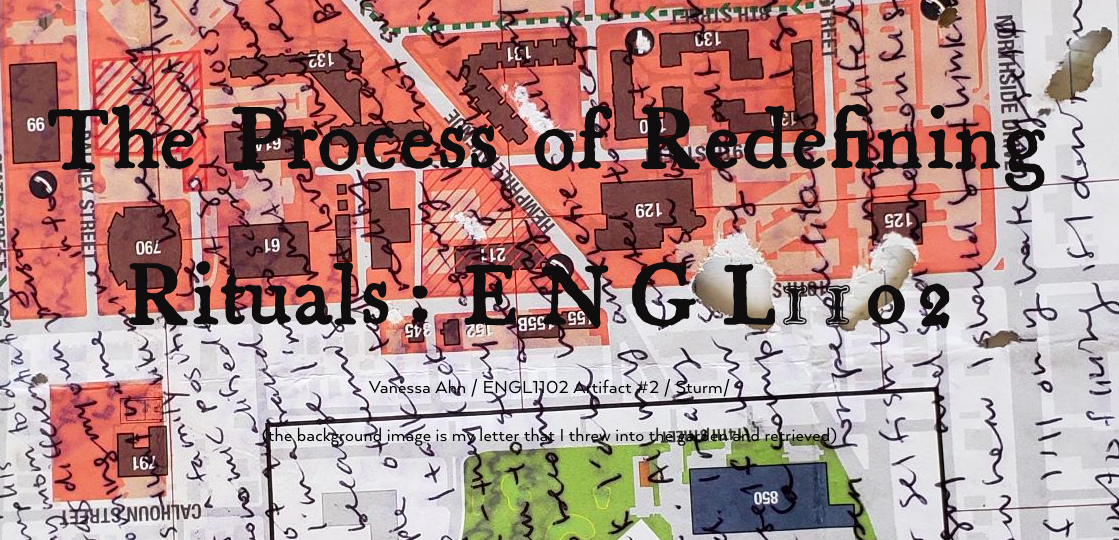

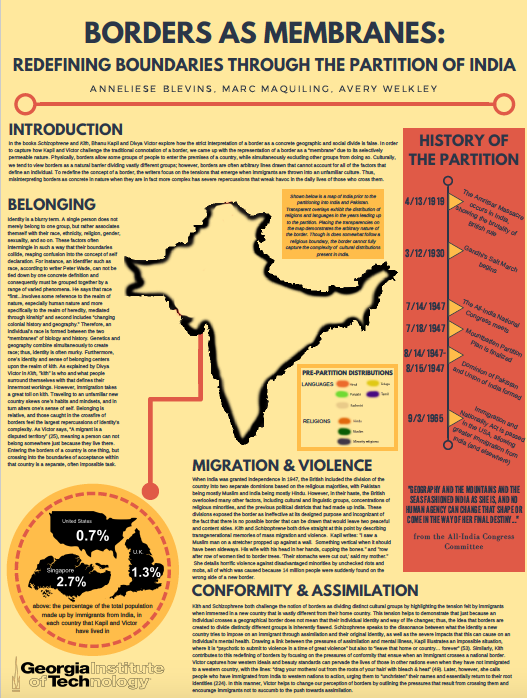
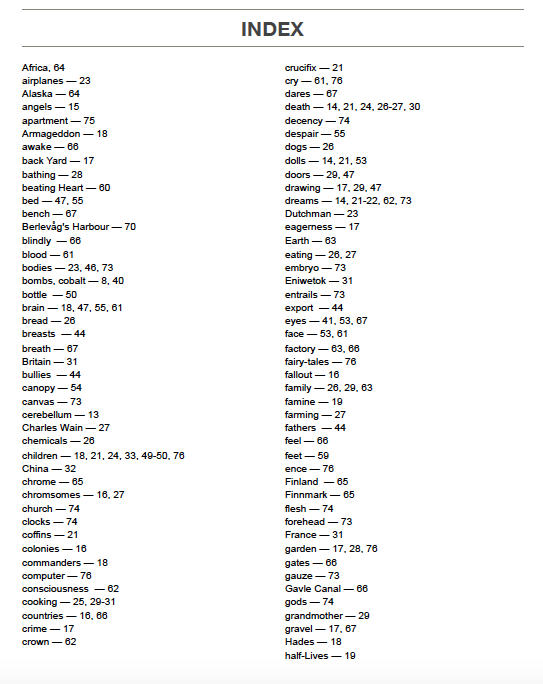
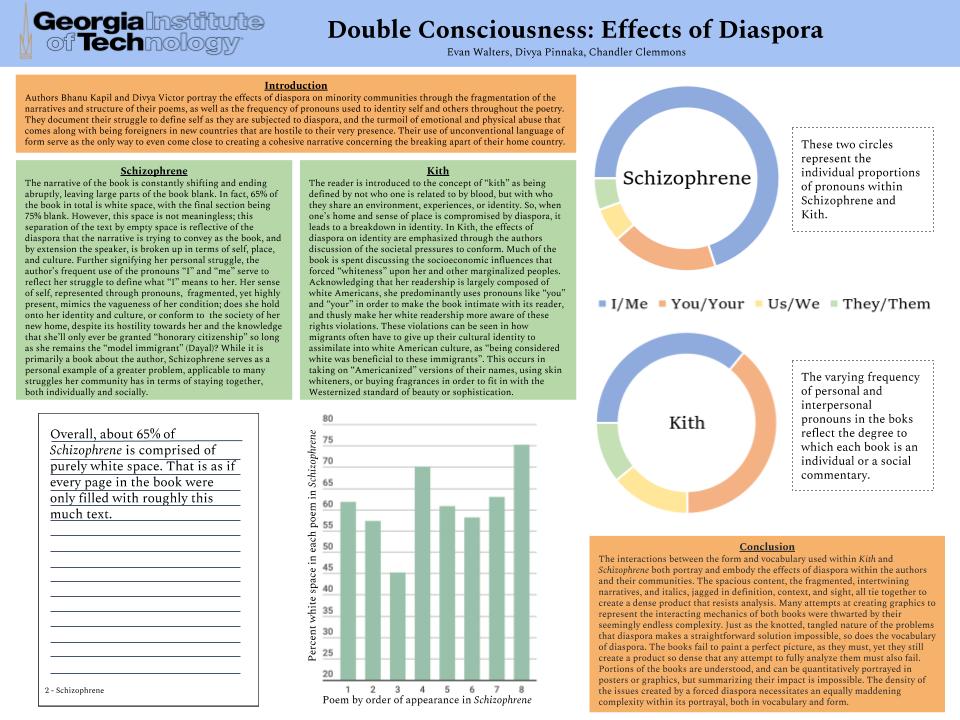

Spring 2018
ENGL 1102: Poetry, Painting, Film, and Music in New York City, 1960-Present
This course will utilize poetry, painting, film, and music from New York-based writers and artists to explore the multimodal languages of American art practices. By activating the etymological root between the words experiment and experience—“experiri,” meaning “to try or to test”—this course will try and test various creative and critical approaches to the arts to gain both an experiential and historical understanding of aesthetic innovation in the global cultural center of New York over the last half century.
Utilizing our WOVEN curriculum, students will engage with visual and nonverbal design through trips to Atlanta's High Museum of Art and Arts@Tech events, create data visualization projects to track developing trends across genres and mediums, and experiment in hands-on creative practices with era-specific technologies to produce their own original cultural artifacts. Artists such as Eileen Myles, Andy Warhol, Amiri Baraka, The Velvet Underground, Ana Mendieta, Jay-Z, and Alex Katz will populate the syllabus.
Note: All student work used with permission with authorship noted when permitted.
***
Artifact 1: Poster Response to The Sonnets and Chelsea Girls
These collaborative posters explore unique connections between Ted Berrigan's The Sonnets and Eileen Myles's Chelsea Girls, books in two different genres, published 30 years apart, that act as touchstone texts of the New York School aesthetic. Using geocritical analysis to map urban space across generational lineages and graphic models to visualize nonlinear formal techniques and the complex relationships between time, repetition, and order, students examined how visual representations of aesthetic concepts offer fresh perspectives on literary analysis. By working to visualize their theses, students found that literature includes data that can be transformed into compelling cultural critiques. This student work meaningfully contributes to scholarship on both Berrigan's and Myles's work, showing how research-based mediums such as posters, typically associated with STEM-related fields, can present students with the opportunity to become co-creators in our discipline.
***
Artifact 2: Podcast on Visual Art
In groups students created 8-10 minute podcasts that investigate the aesthetic, cultural, political, and/or historical importance of a single piece of visual art created by a New York-based or New York-associated visual artist. Using the podcast "The Lonely Palette" as a template, these educational, entertaining documentary conversations act as audio snapshots of an artist and their work. The primary goal of this artifact was to develop a competent, functional aesthetic vocabulary in order to describe visual art in an oral medium. Students used their experiences visiting the High Museum of Art in Atlanta to consider the relationships between viewer, curator, artist, and the art object itself. This rhetorical awareness of the aesthetics of making and looking, and how art affects public and personal space simultaneously, allowed students to produce insightful podcasts in which, as first-year engineers and computer scientists, they become art historians.
Student podcast on Pipe Dream 2 (1986) by George Schneeman
Student podcast on Winter Landscape 2 (2007) by Alex Katz, on view at the High Museum of Art
Student podcast on Peabody #29 by Al Taylor, from "Al Taylor, What Are You Looking At?" exhibit at the High Museum of Art
Student podcast on Traffic (1999) by Red Grooms
Student podcast on Mountains and Sea (1952) by Helen Frankenthaler
***
Artifact 3: New York Artist Research Project
This artifact allowed students to pick a New York-based artist and create an original research project investigating a particular facet, concept, or theme in the artist's work in the medium and genre of the student's choosing. A series of research support documents, including a research proposal, outline, and progress report, aided in the artifact's completion. Each artifact was accompanied by a 1000-word Research Statement that articulated the project's purpose, research findings and analysis, and contribution to the field of study. The final photograph in the gallery to the left shows students showcasing their research at an informal conference-style event at the end of the semester.


